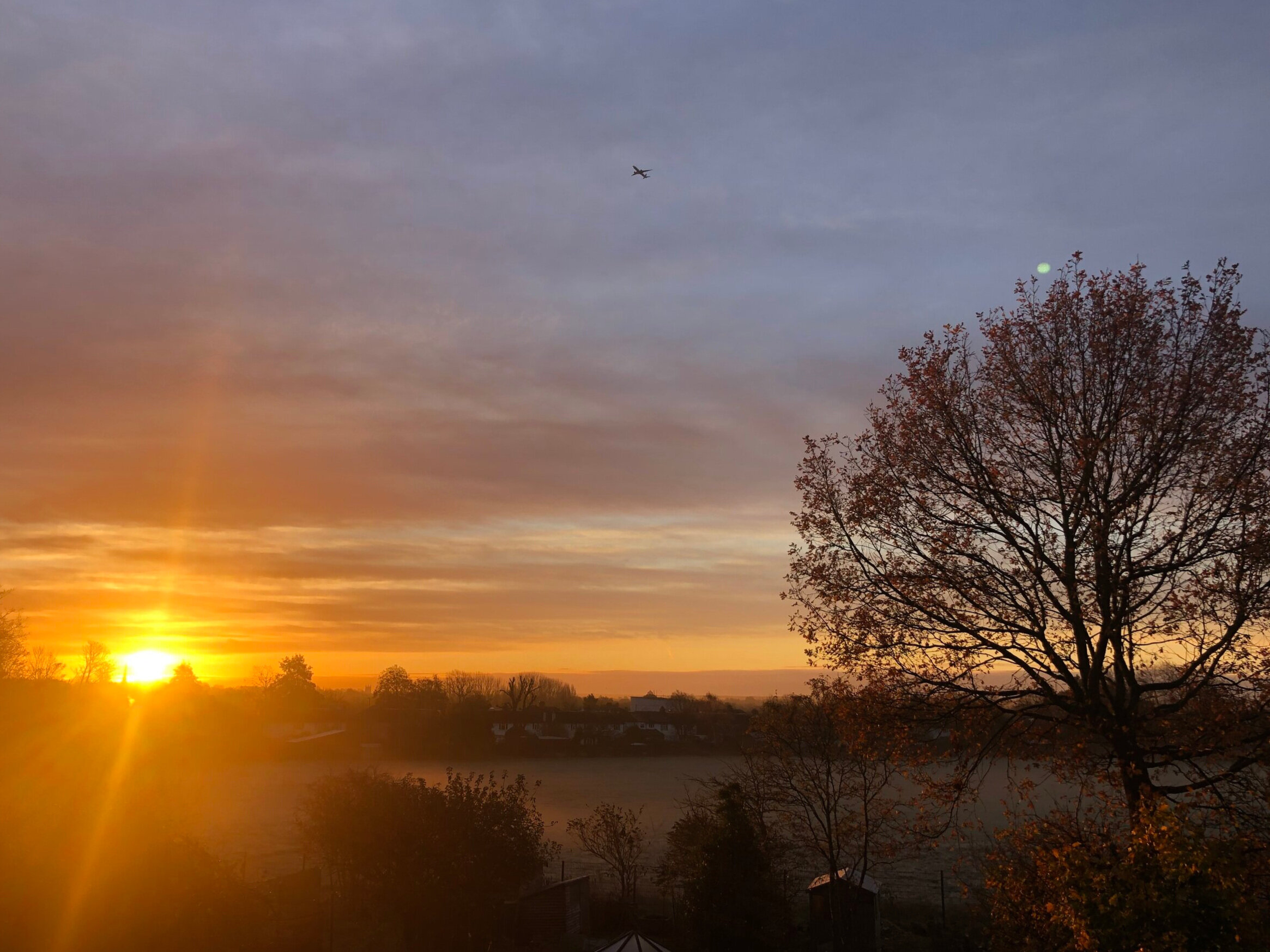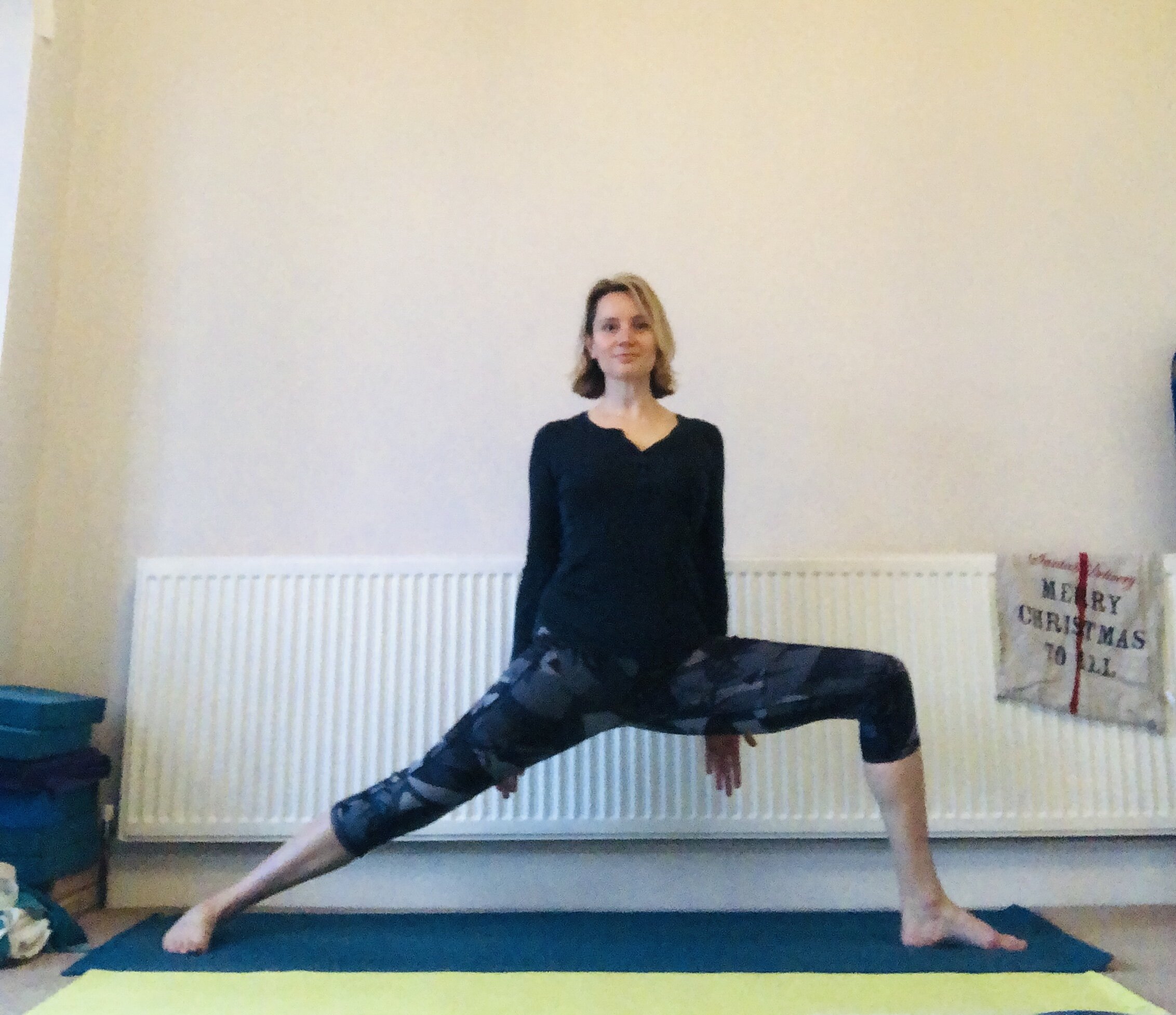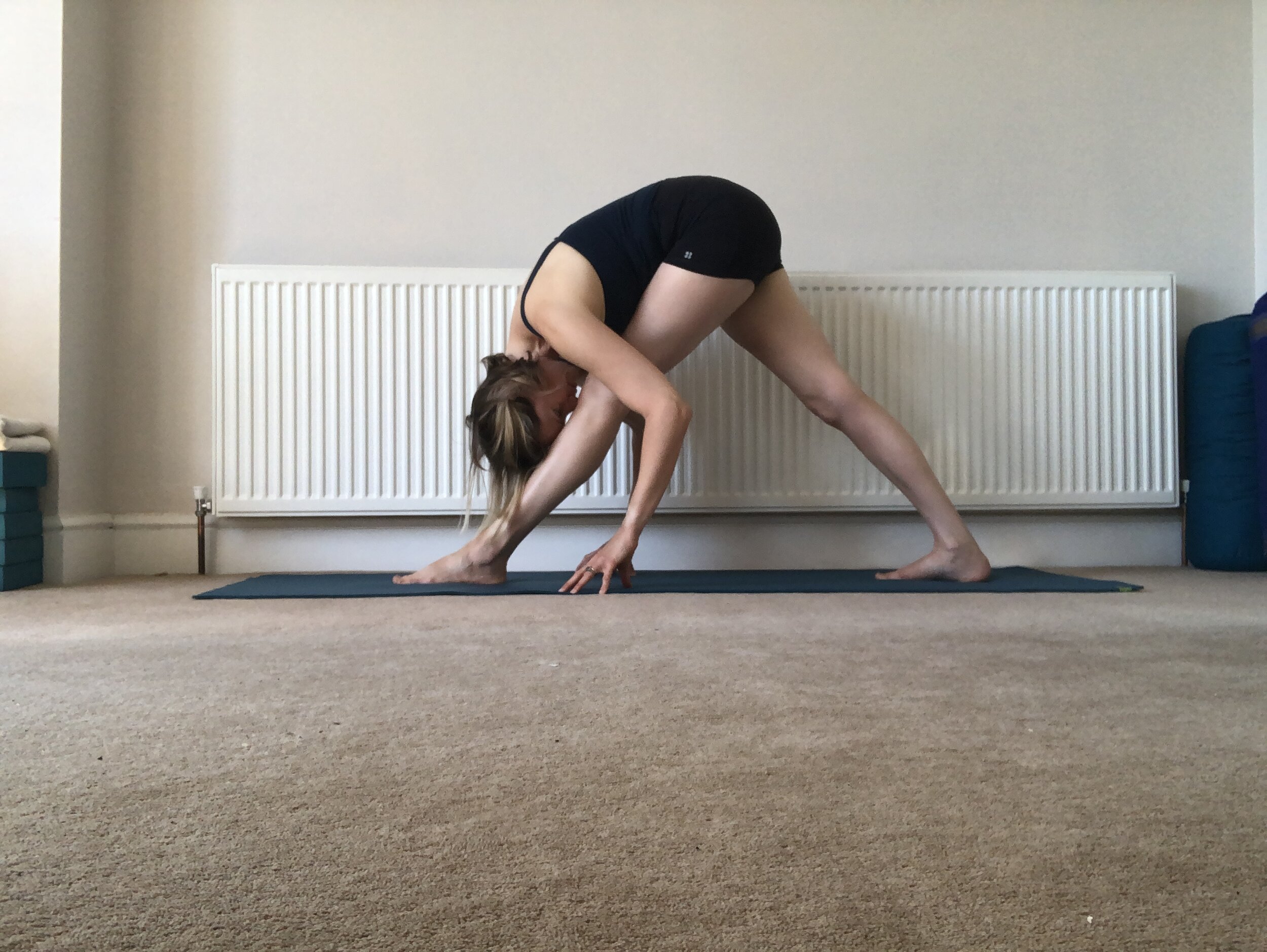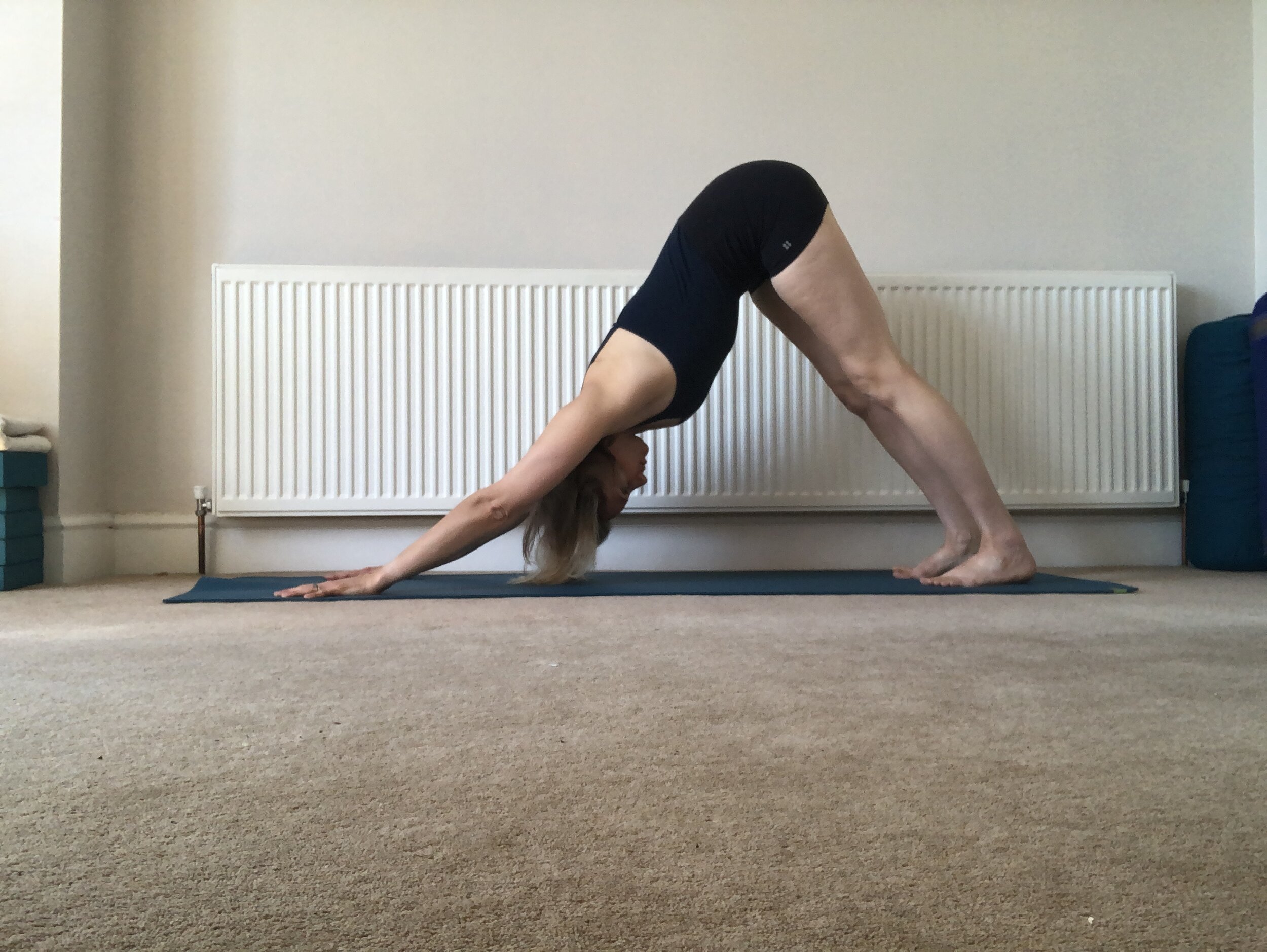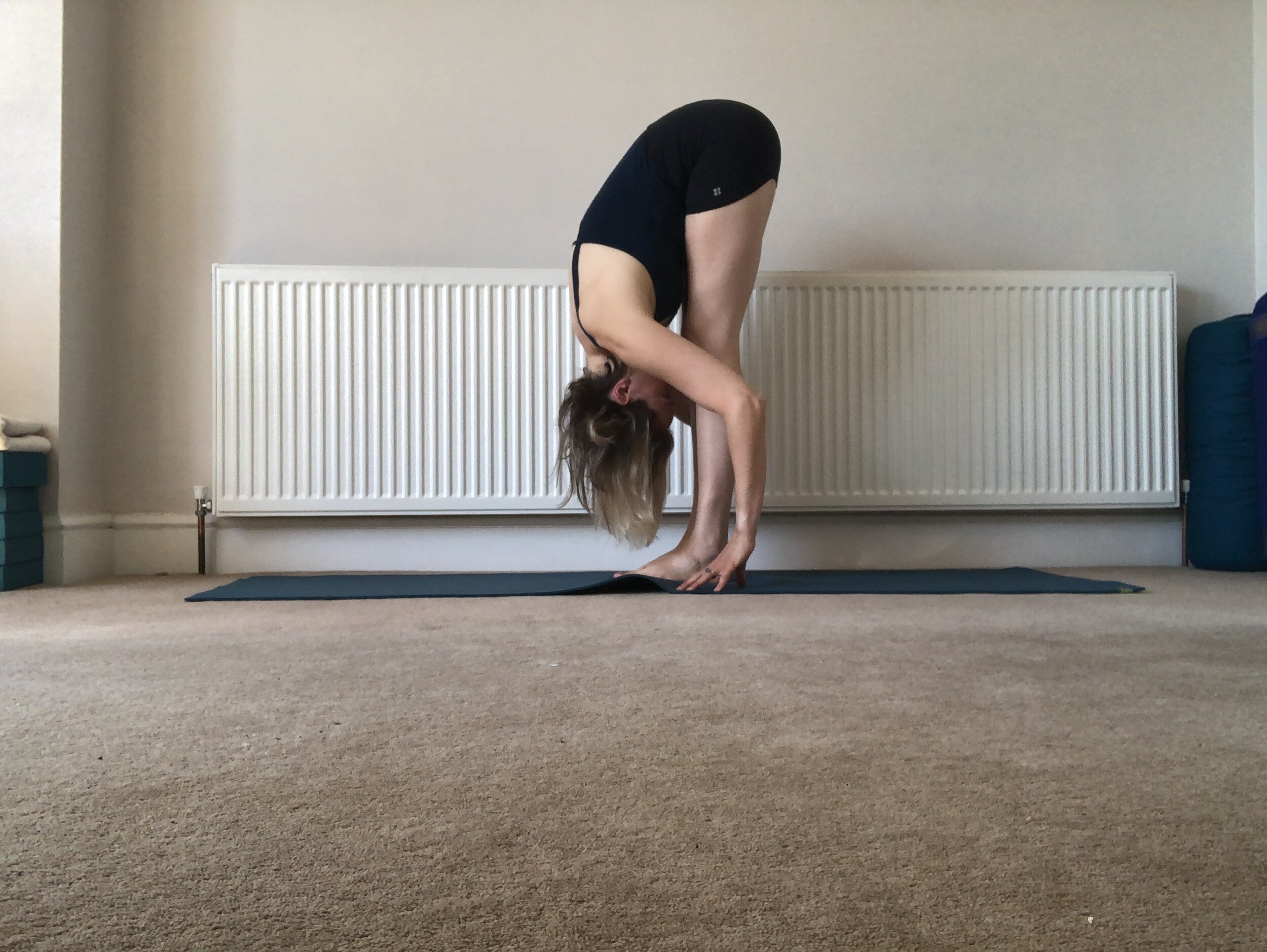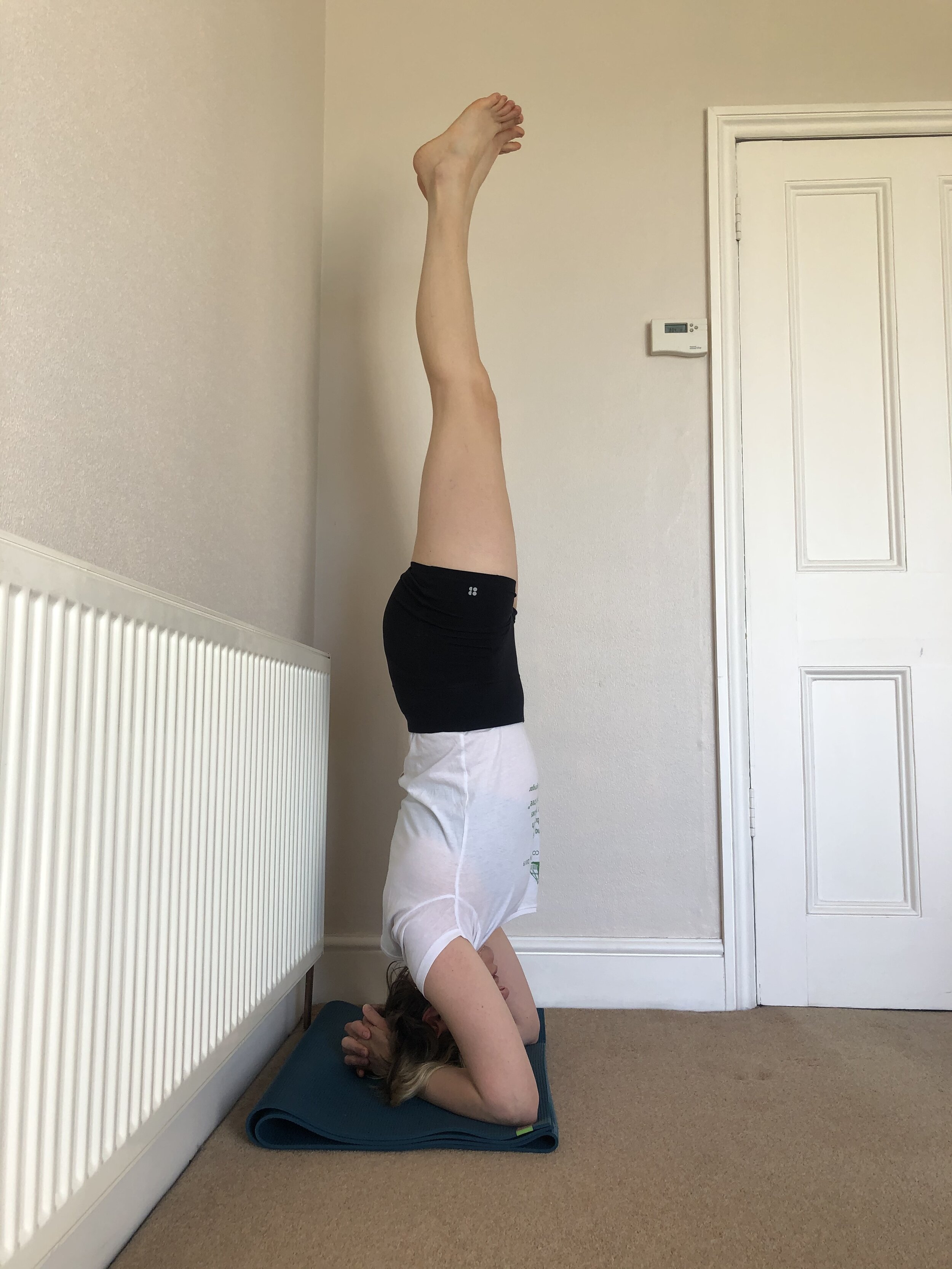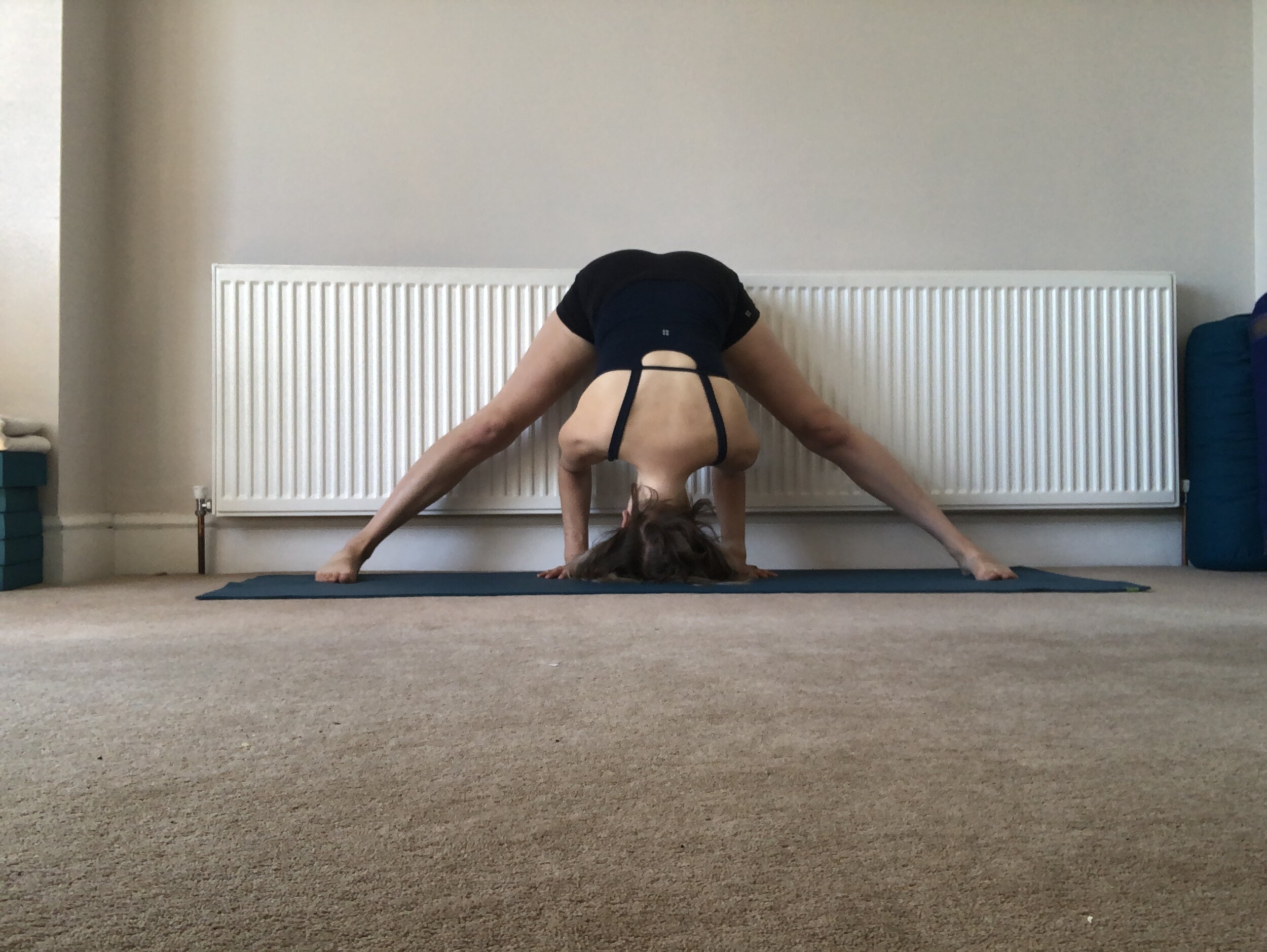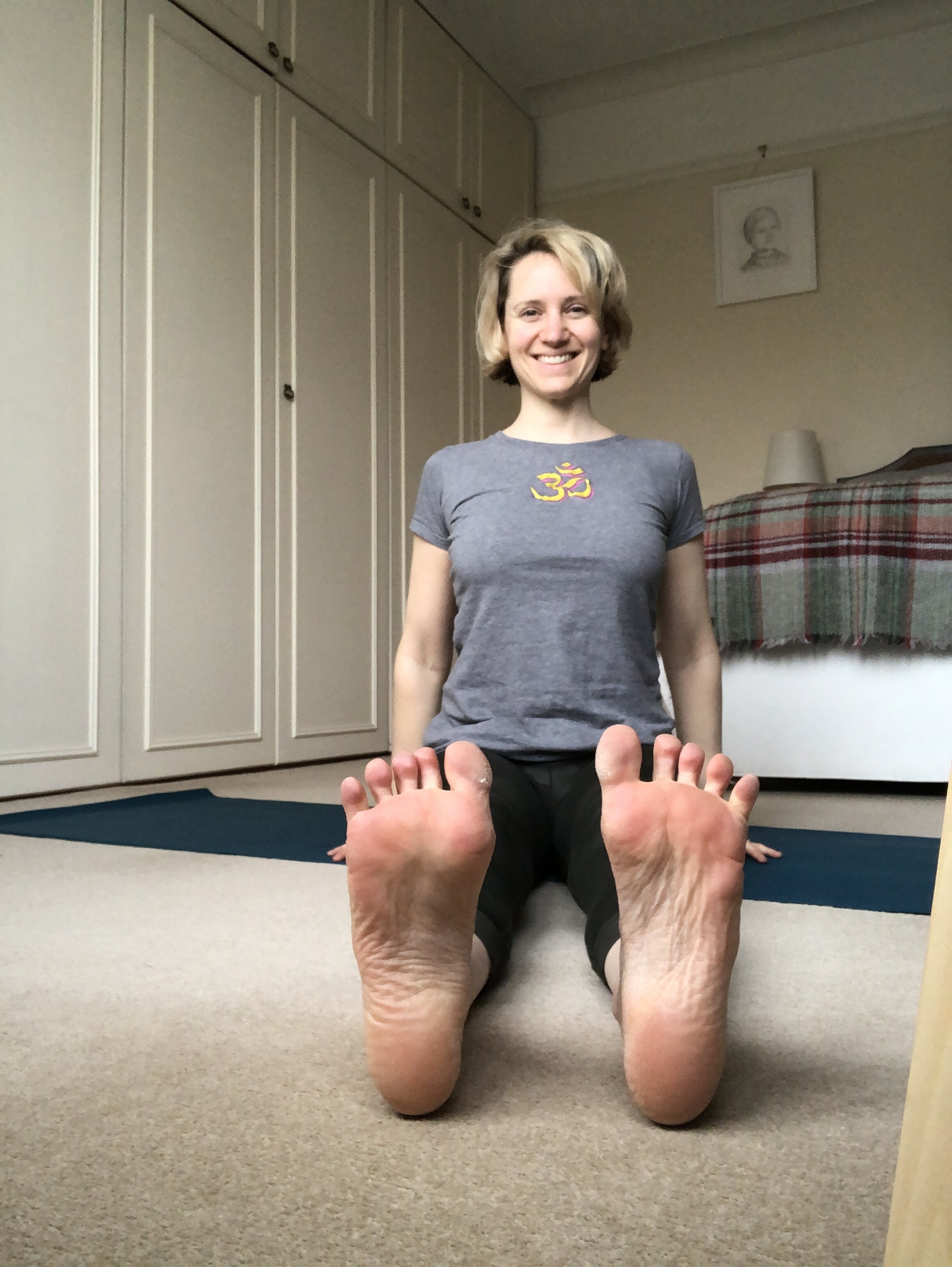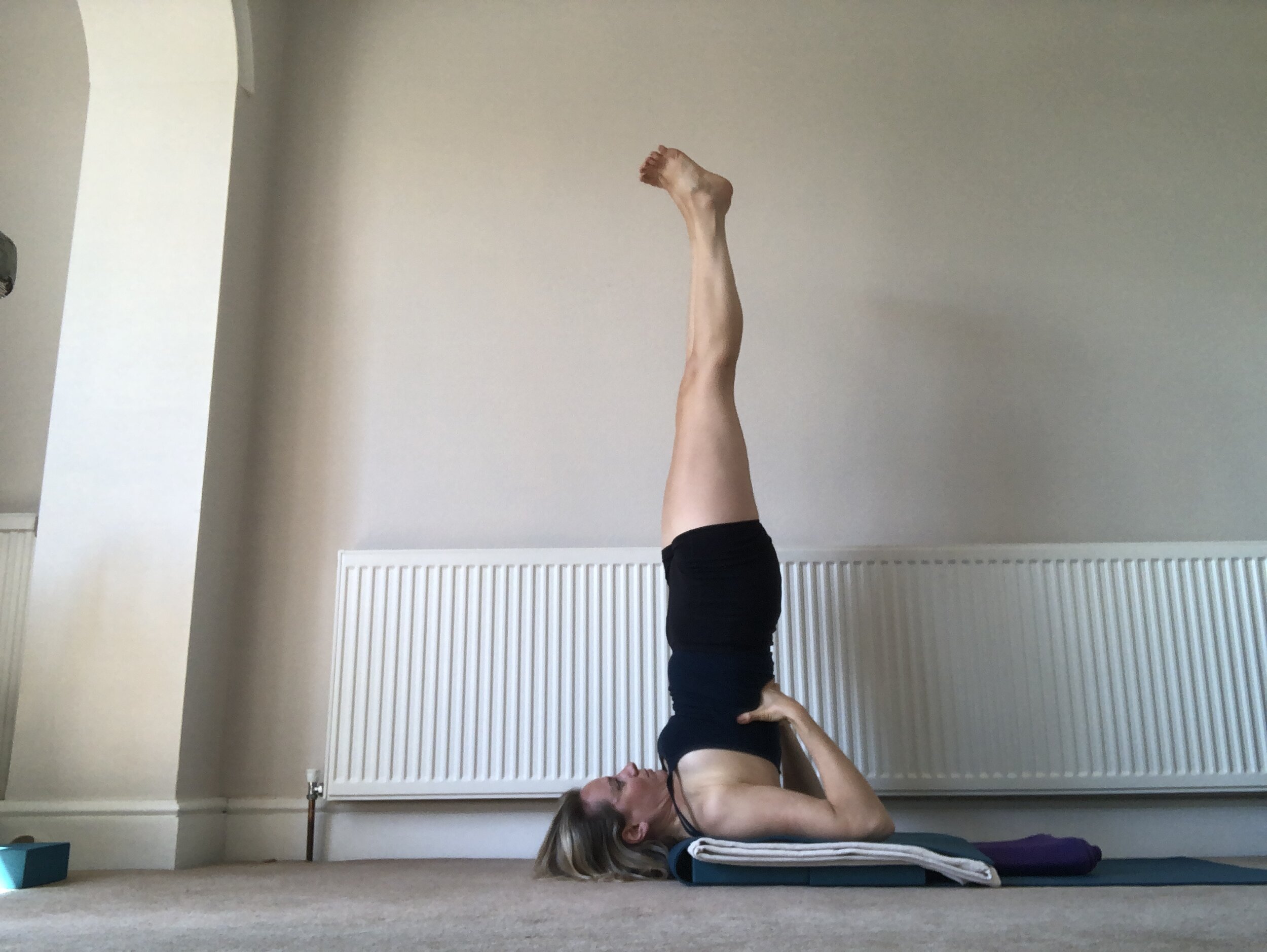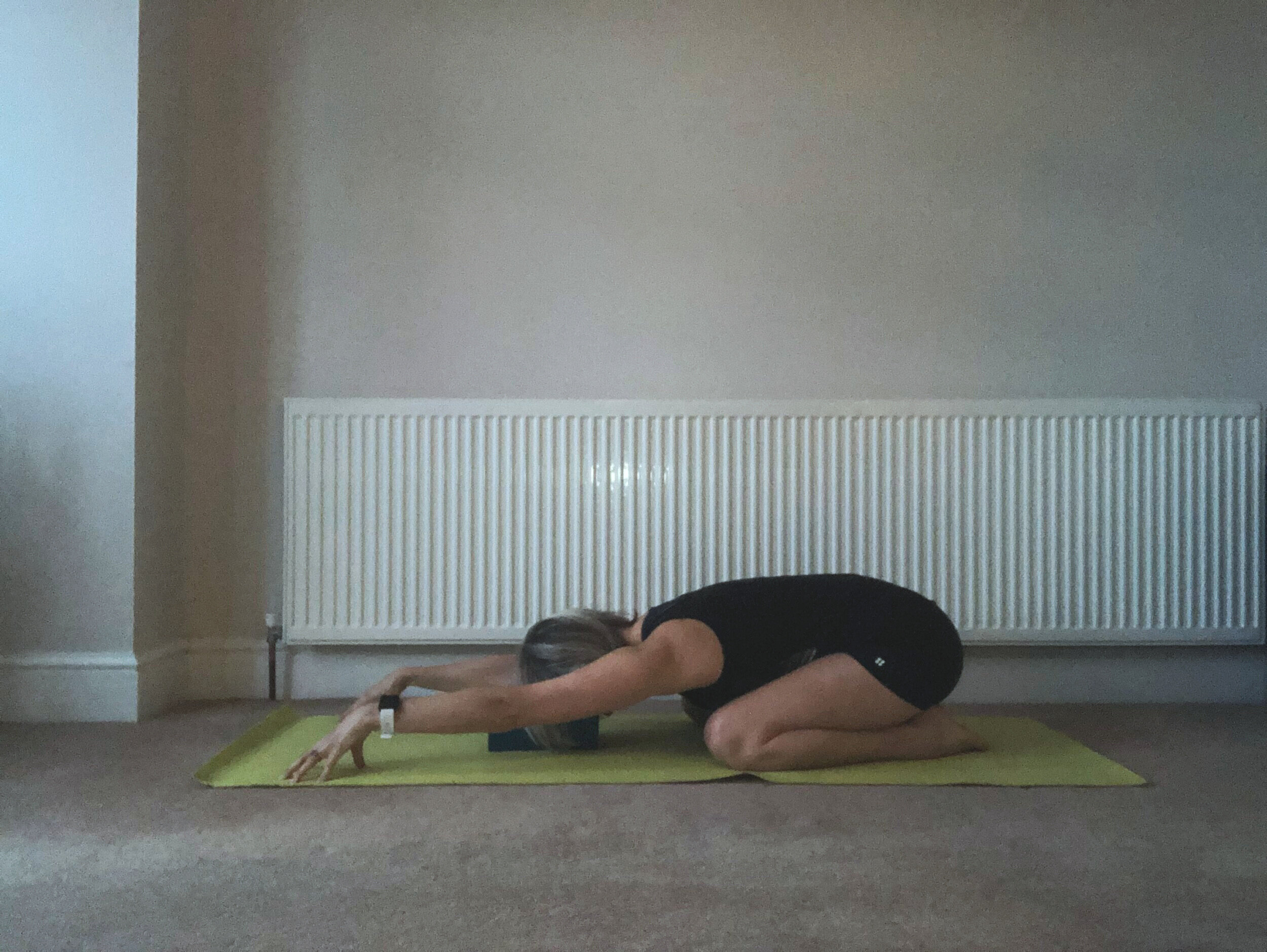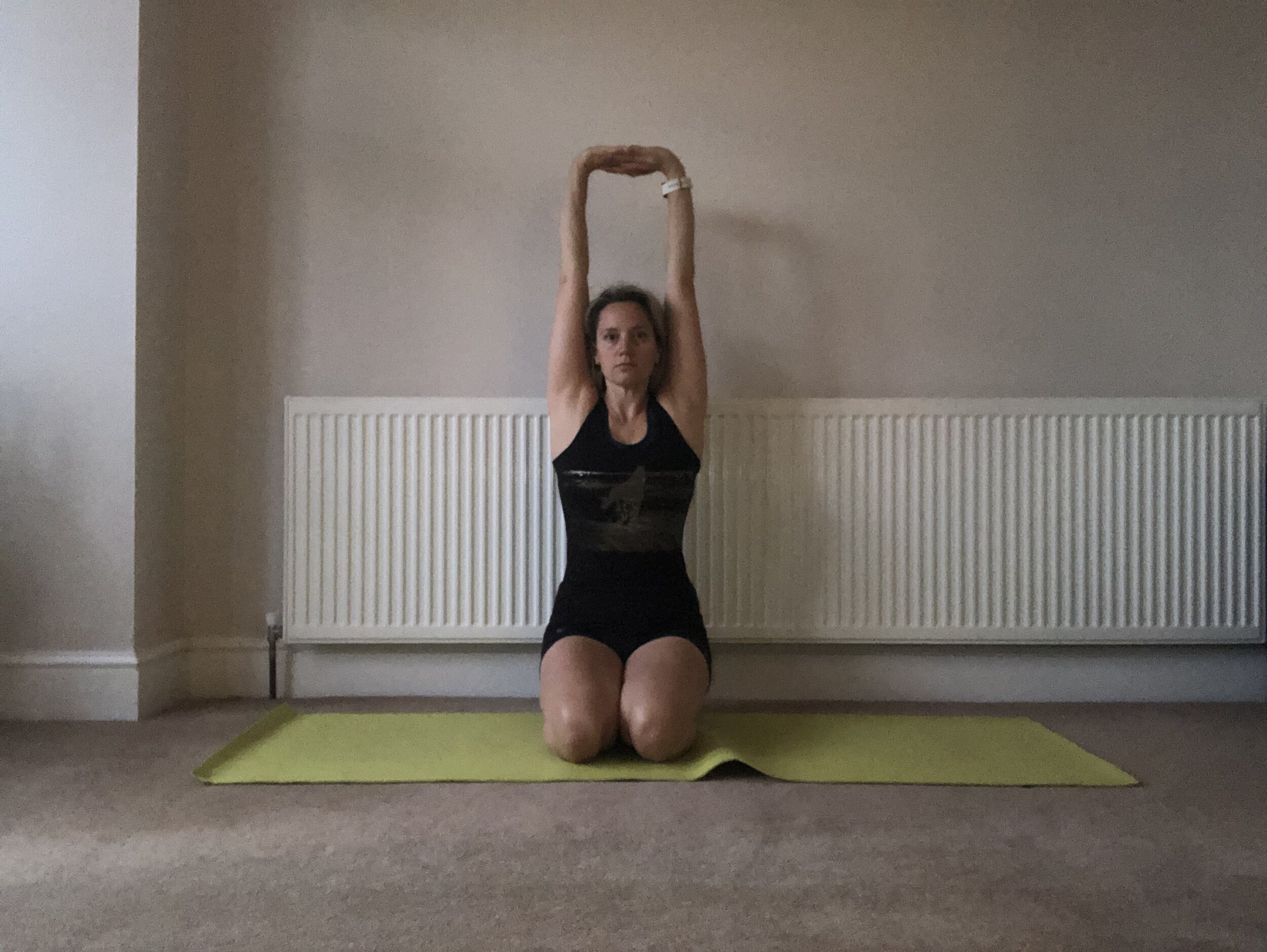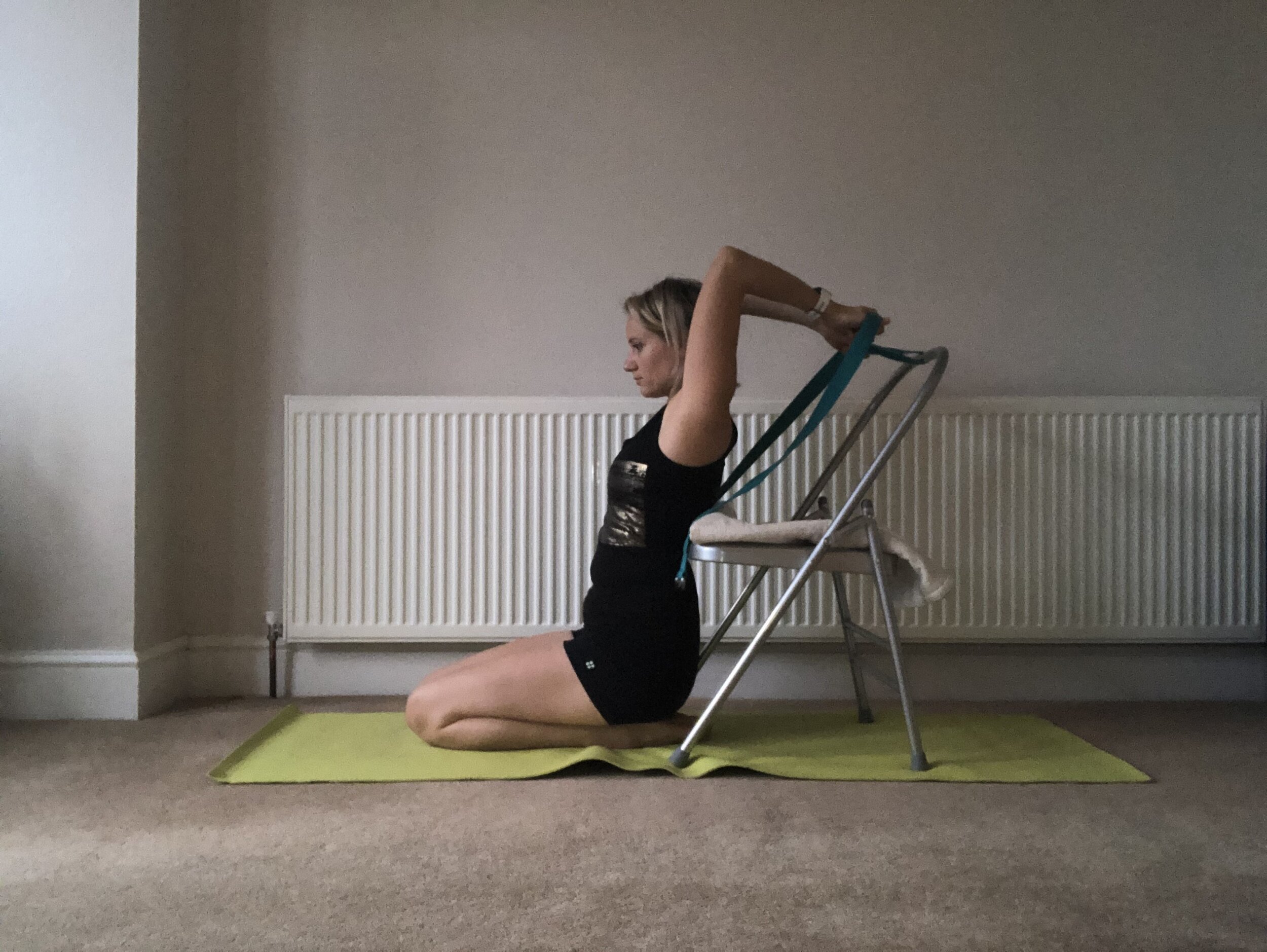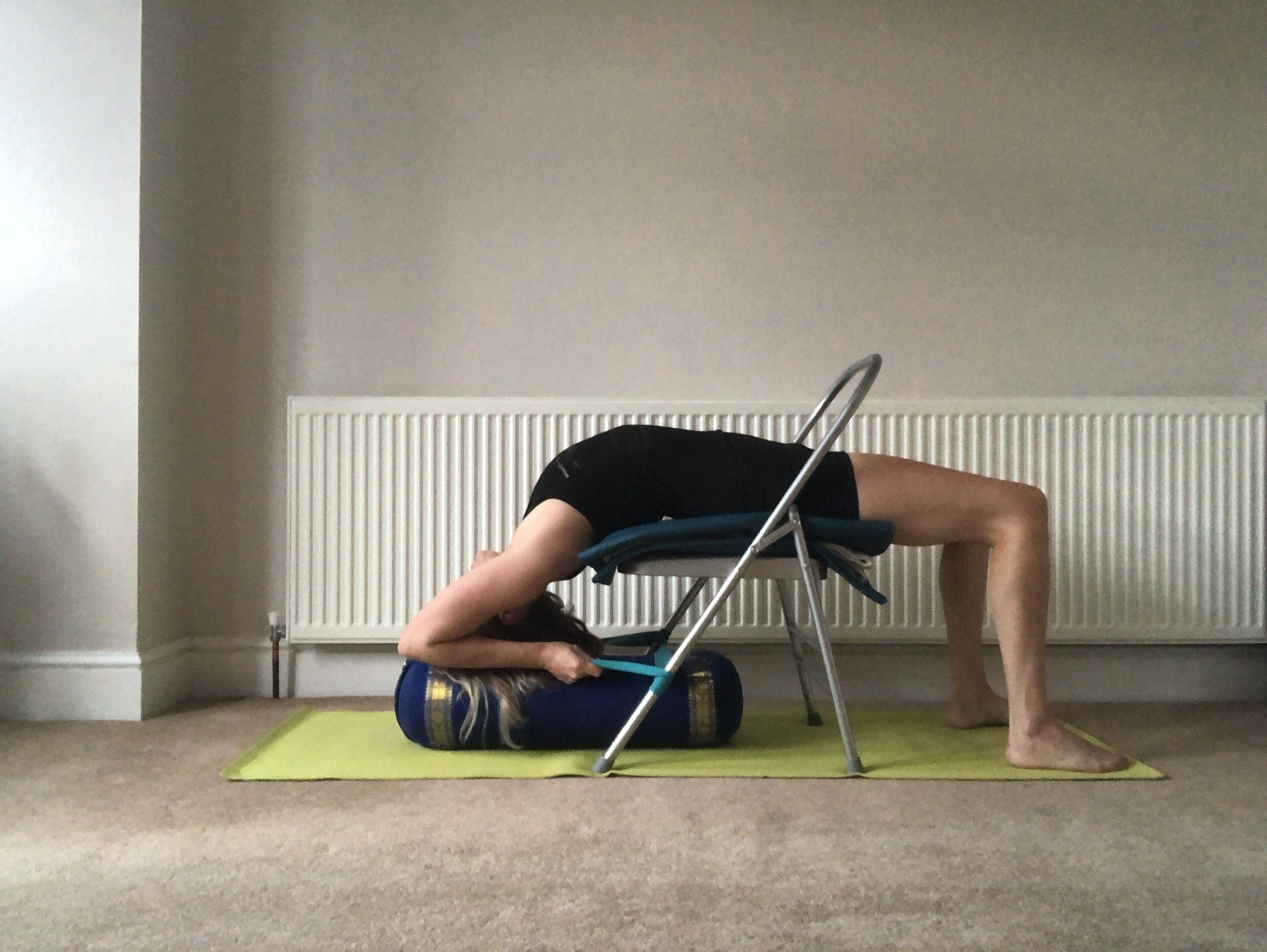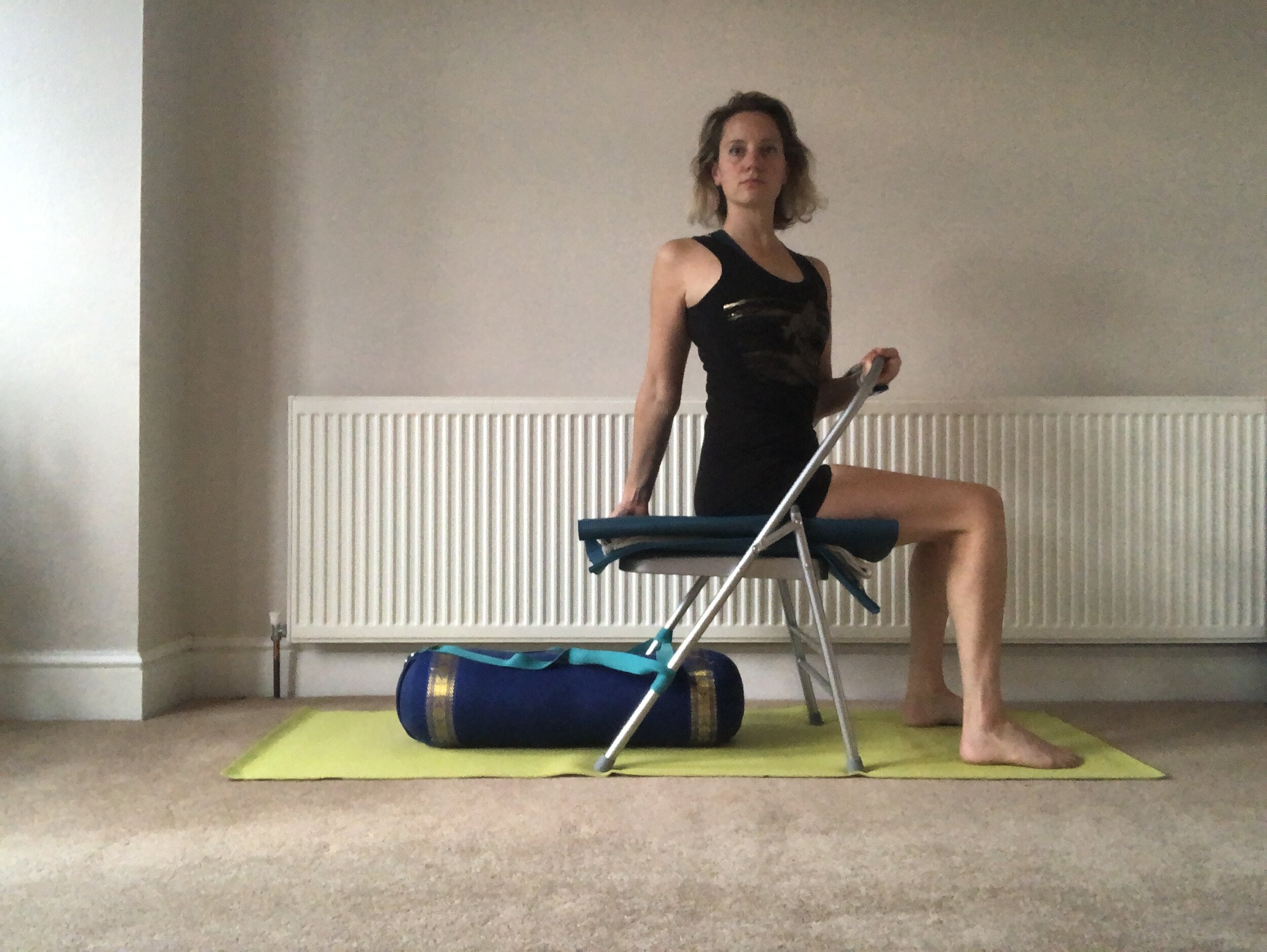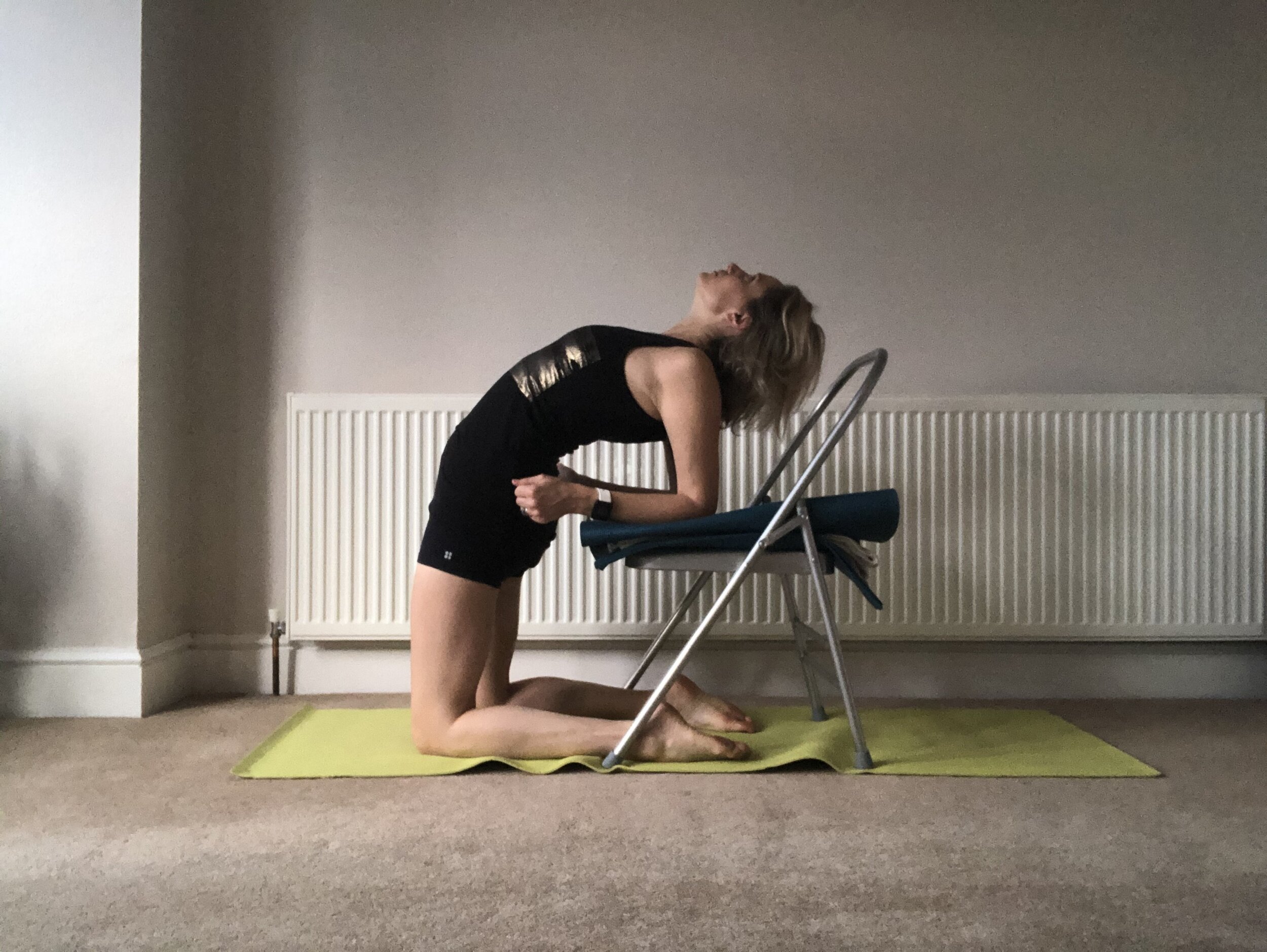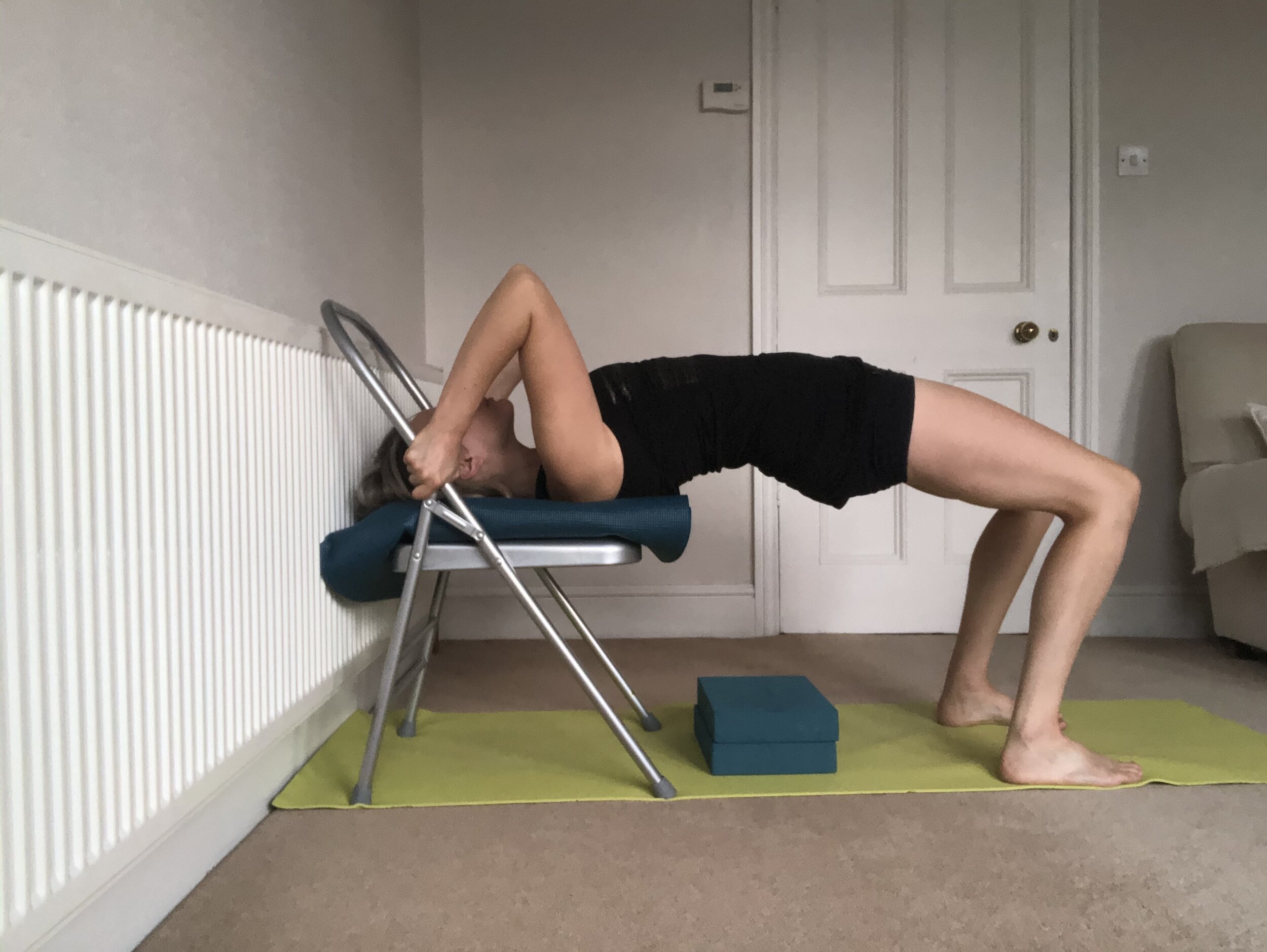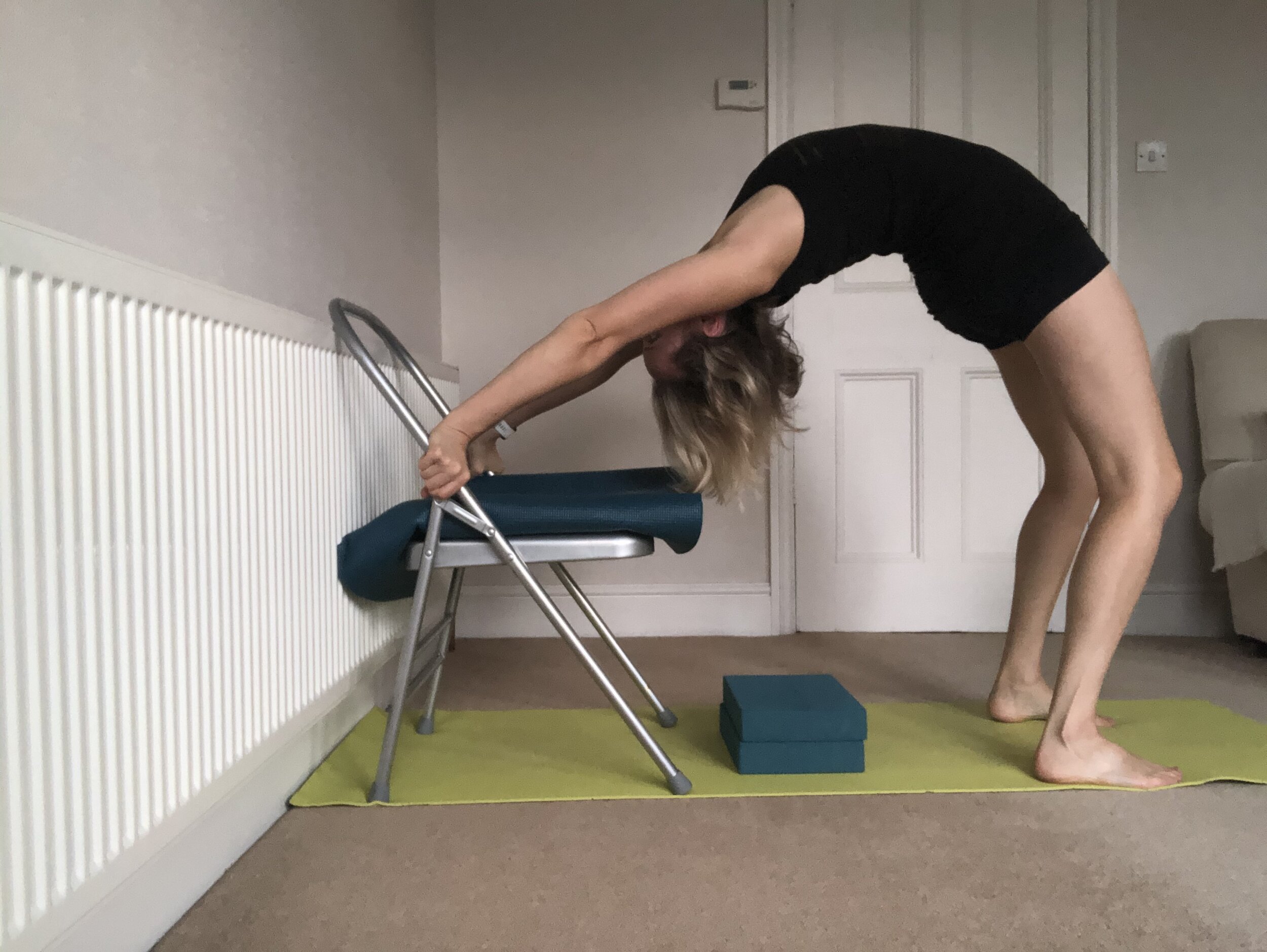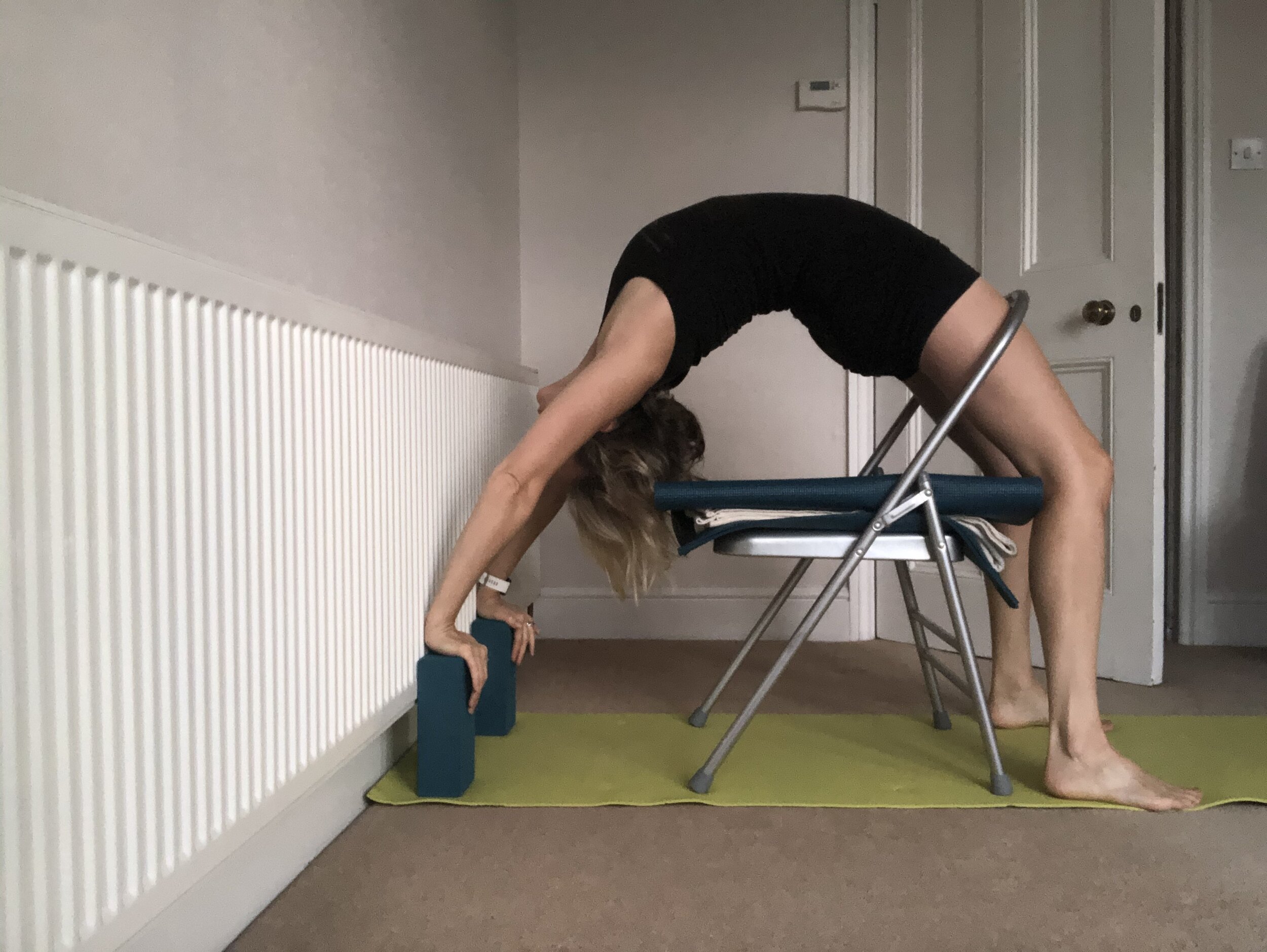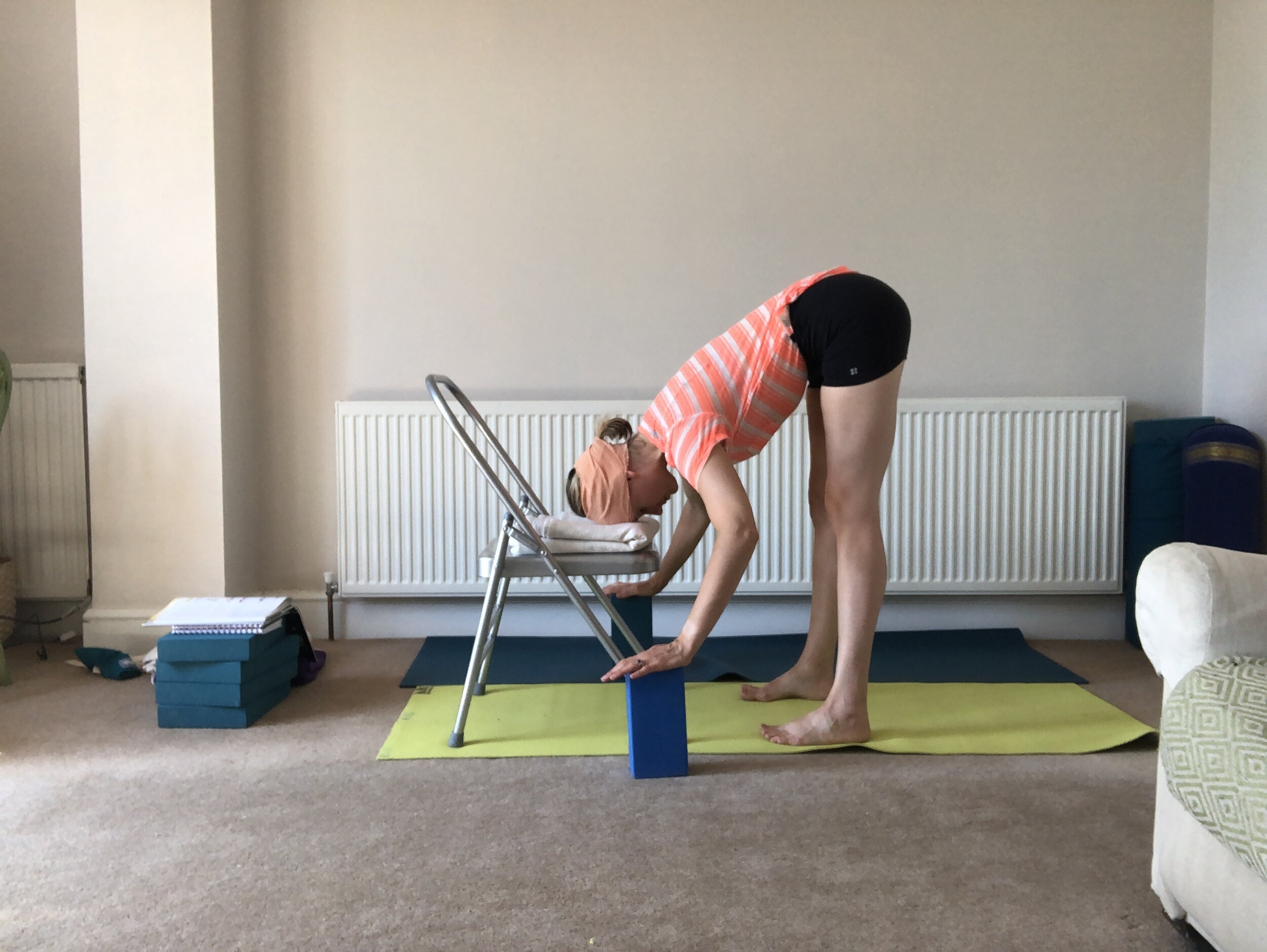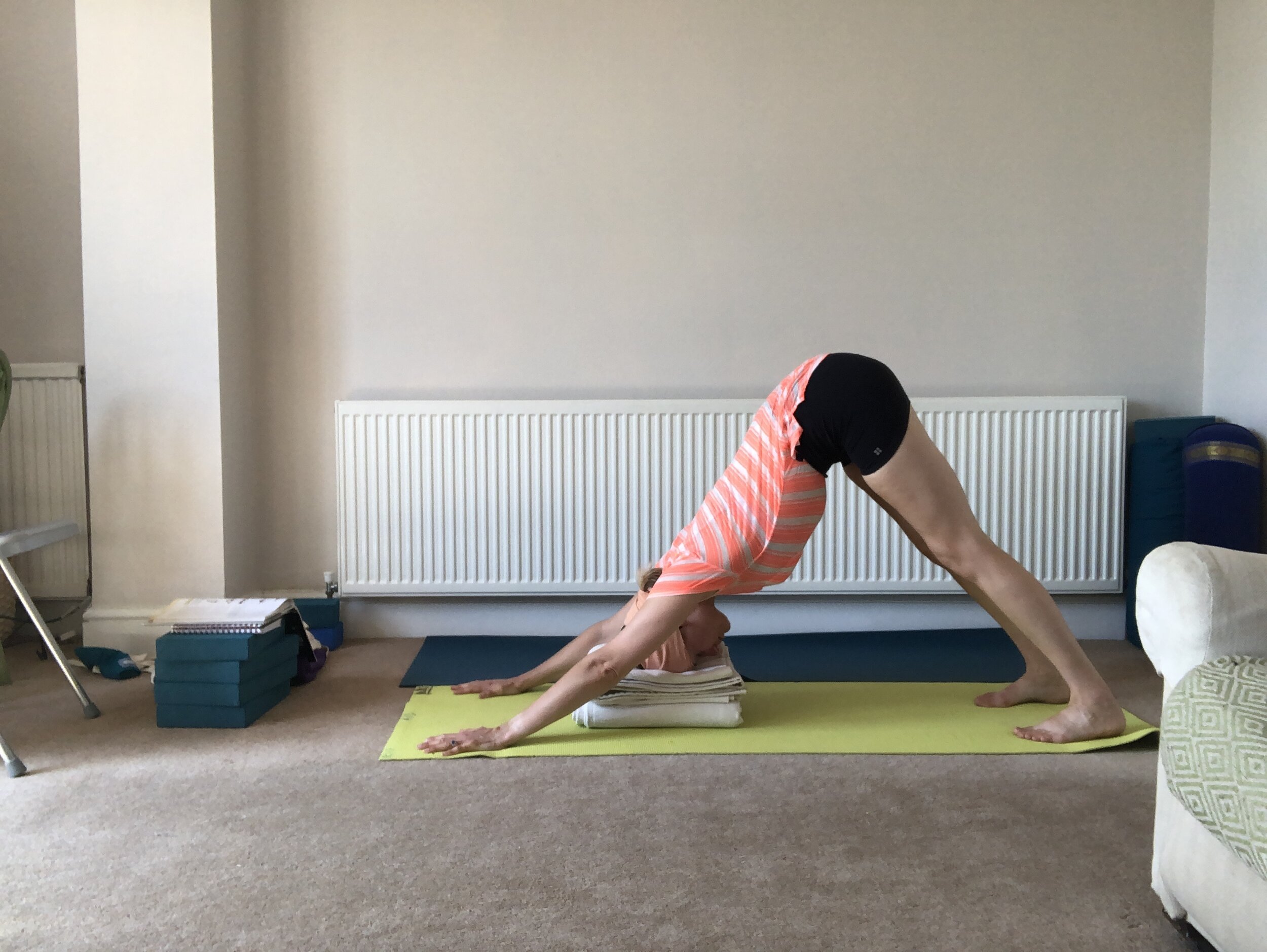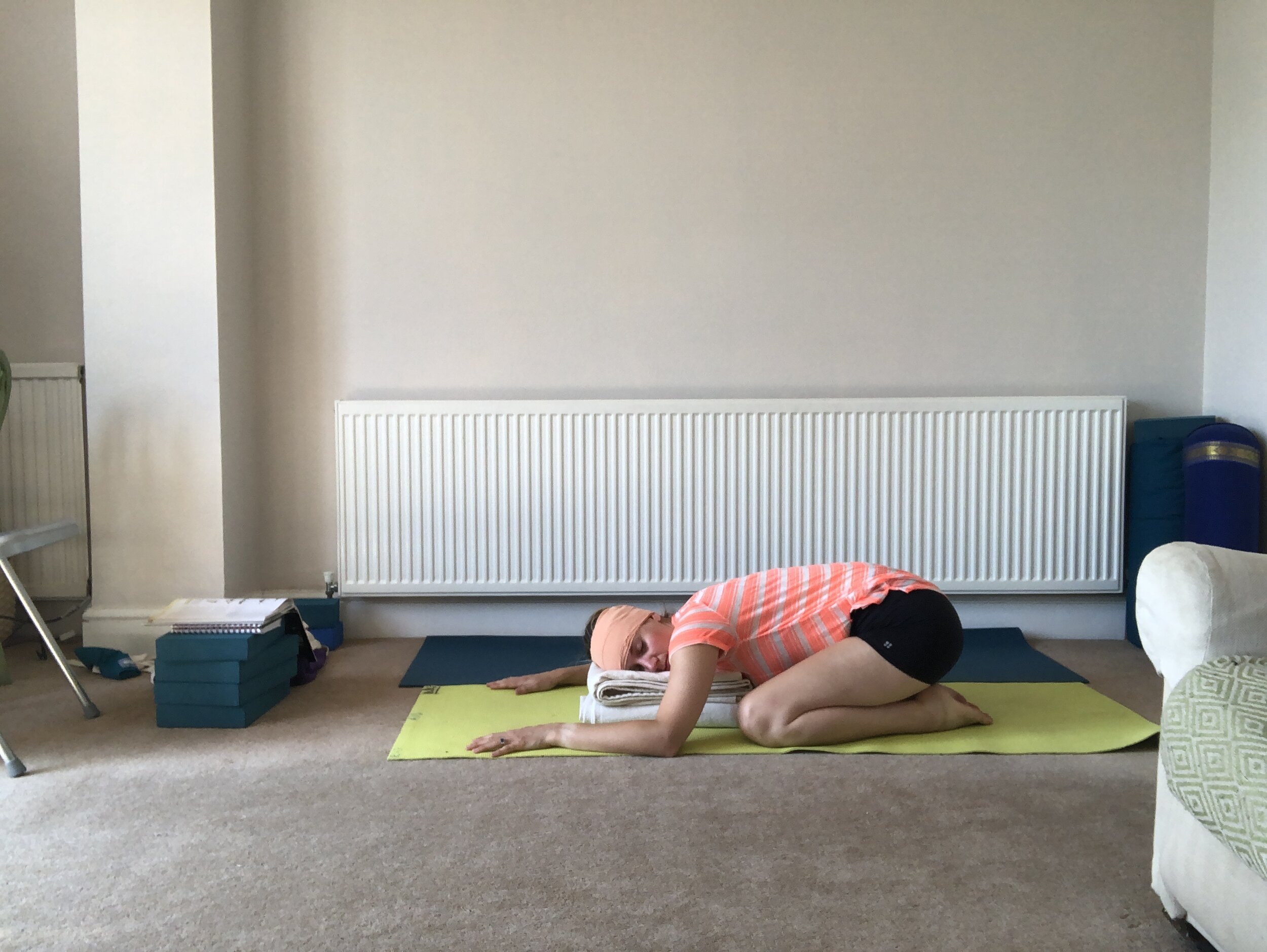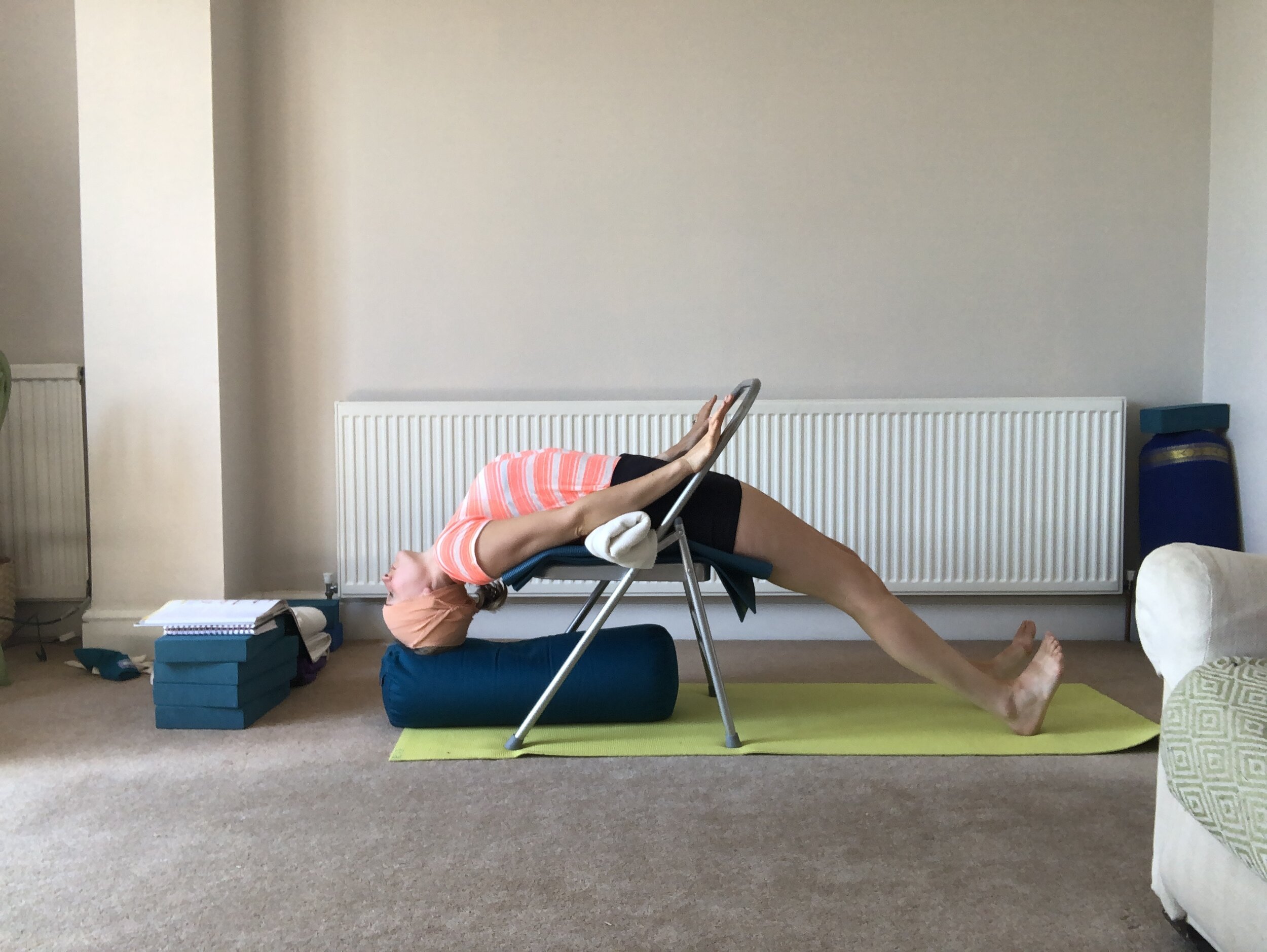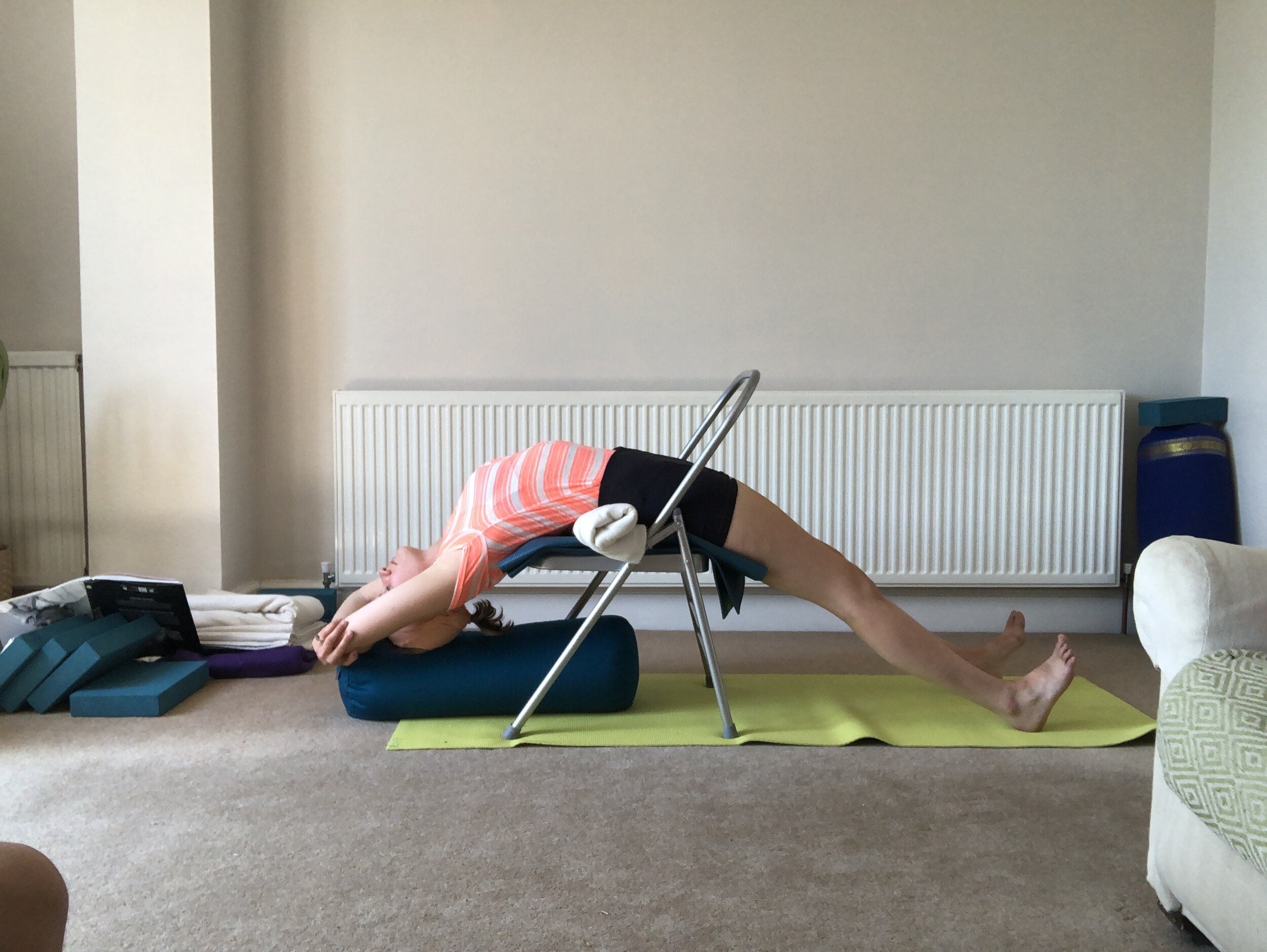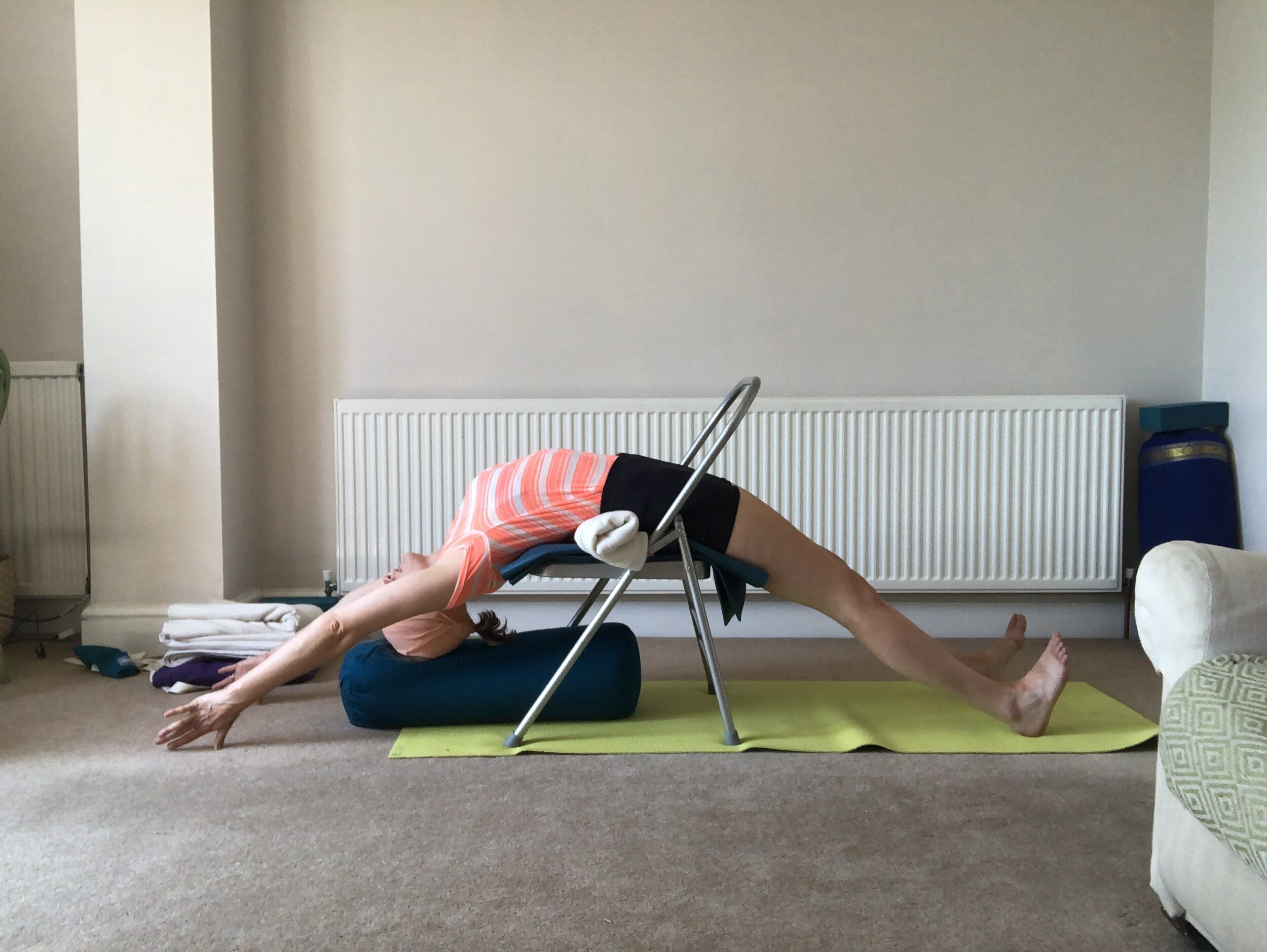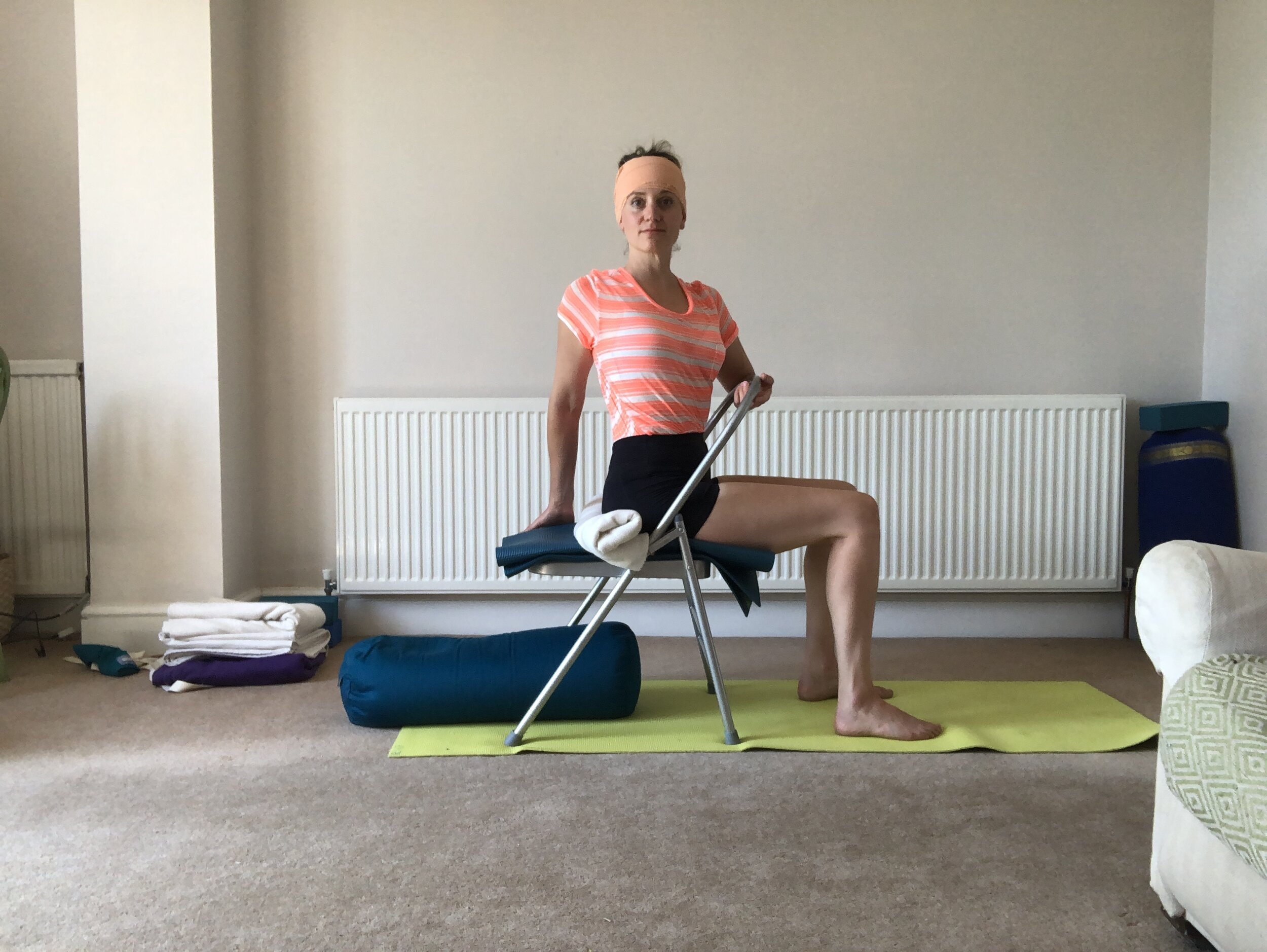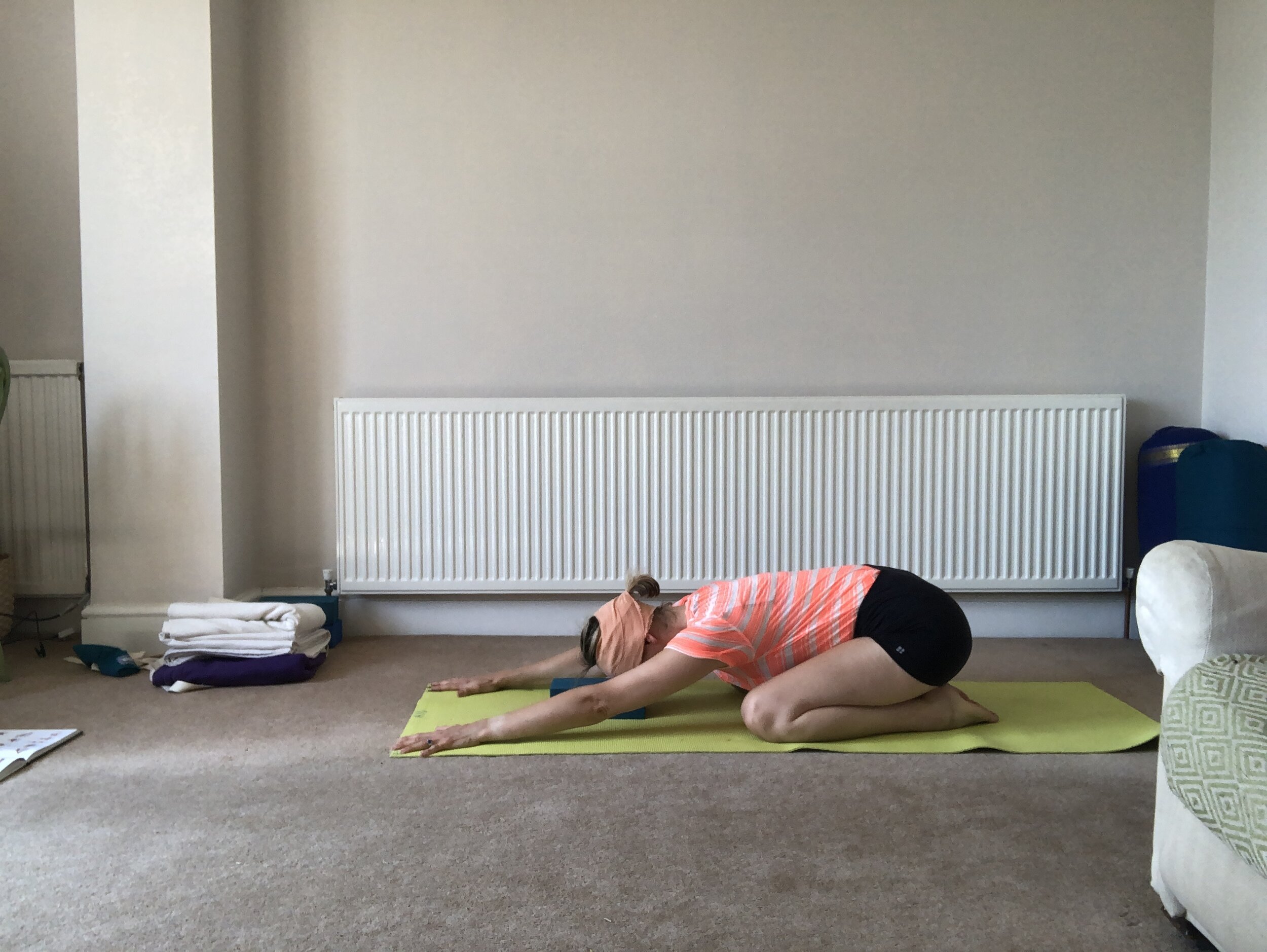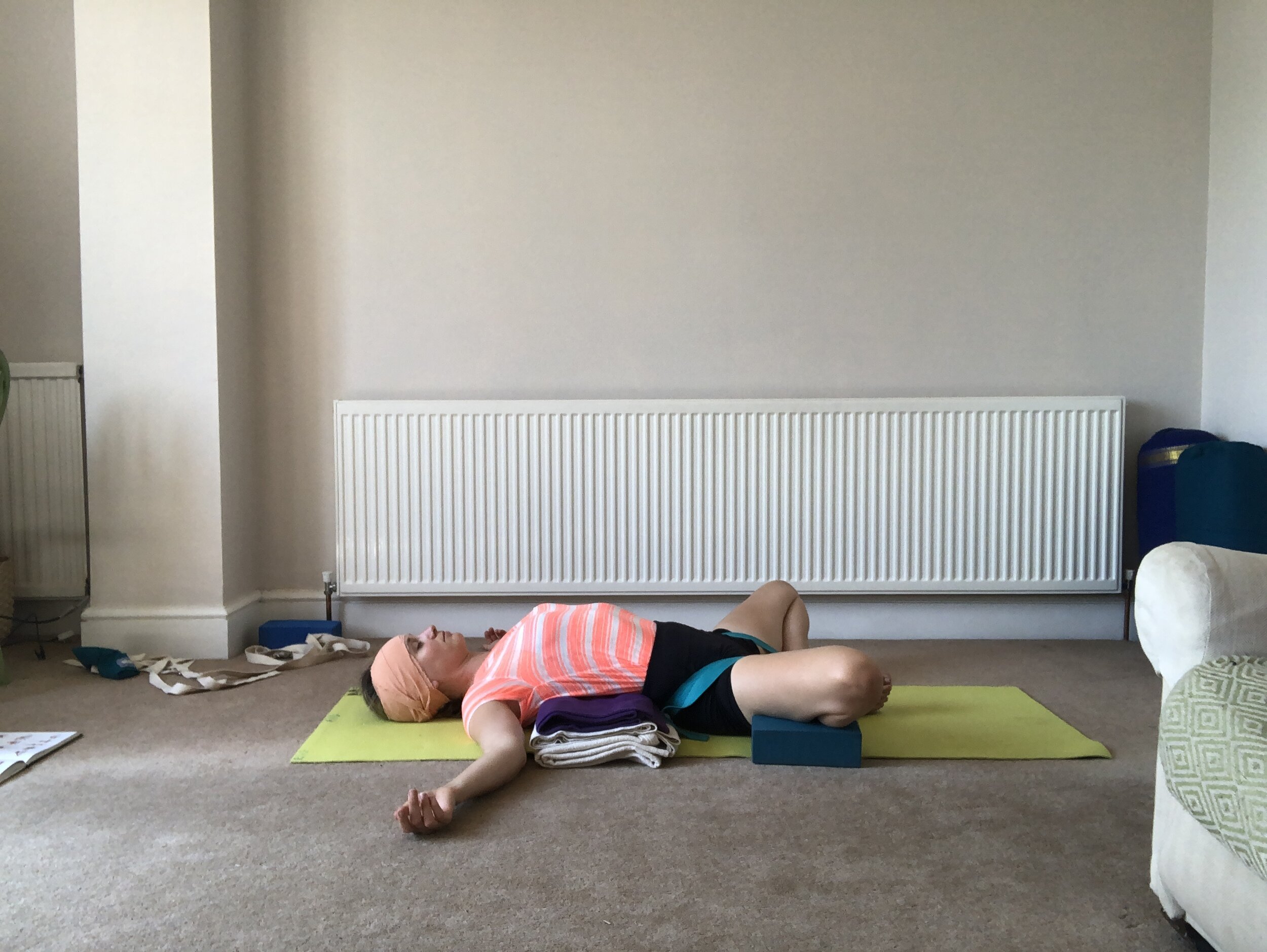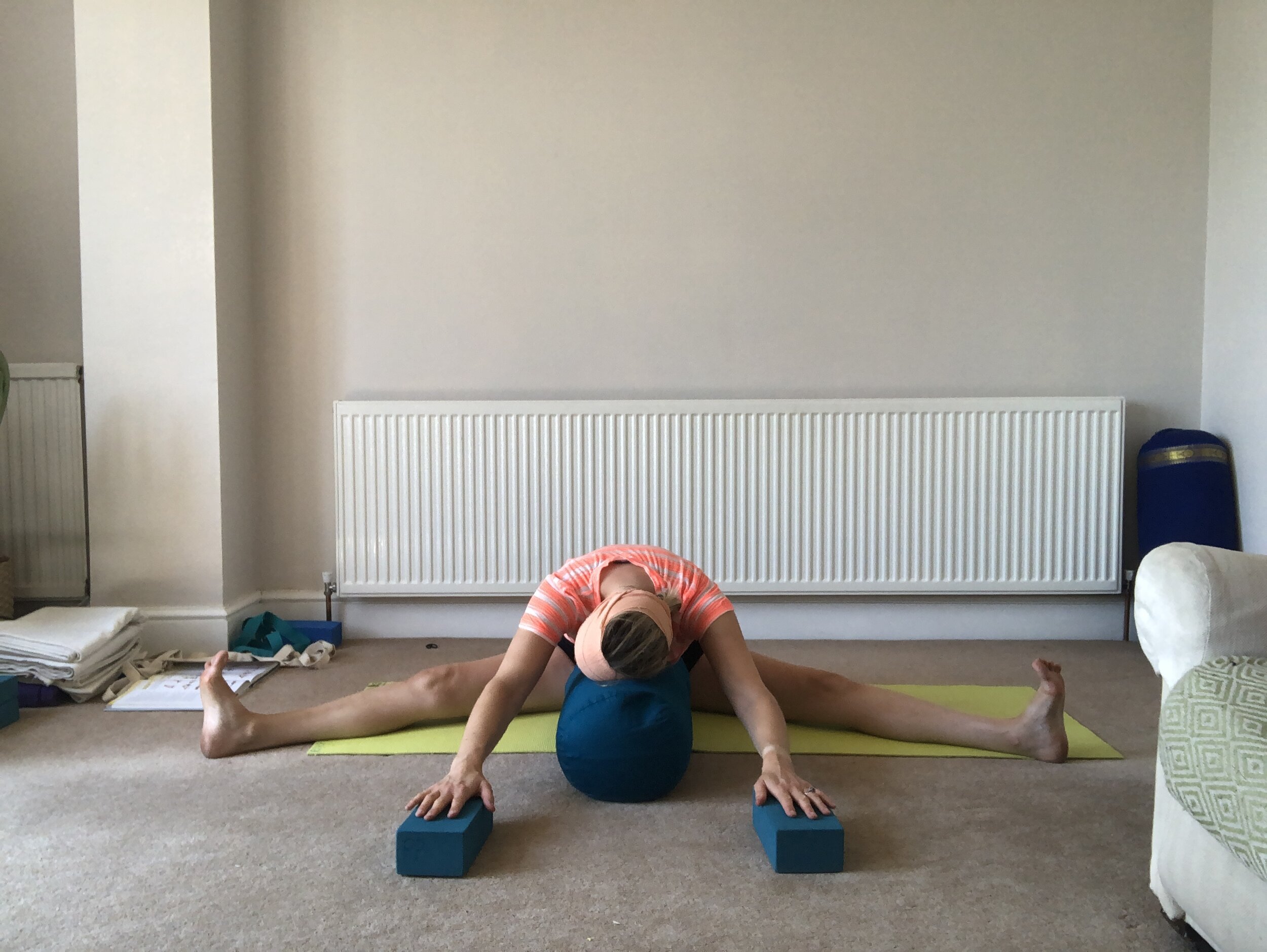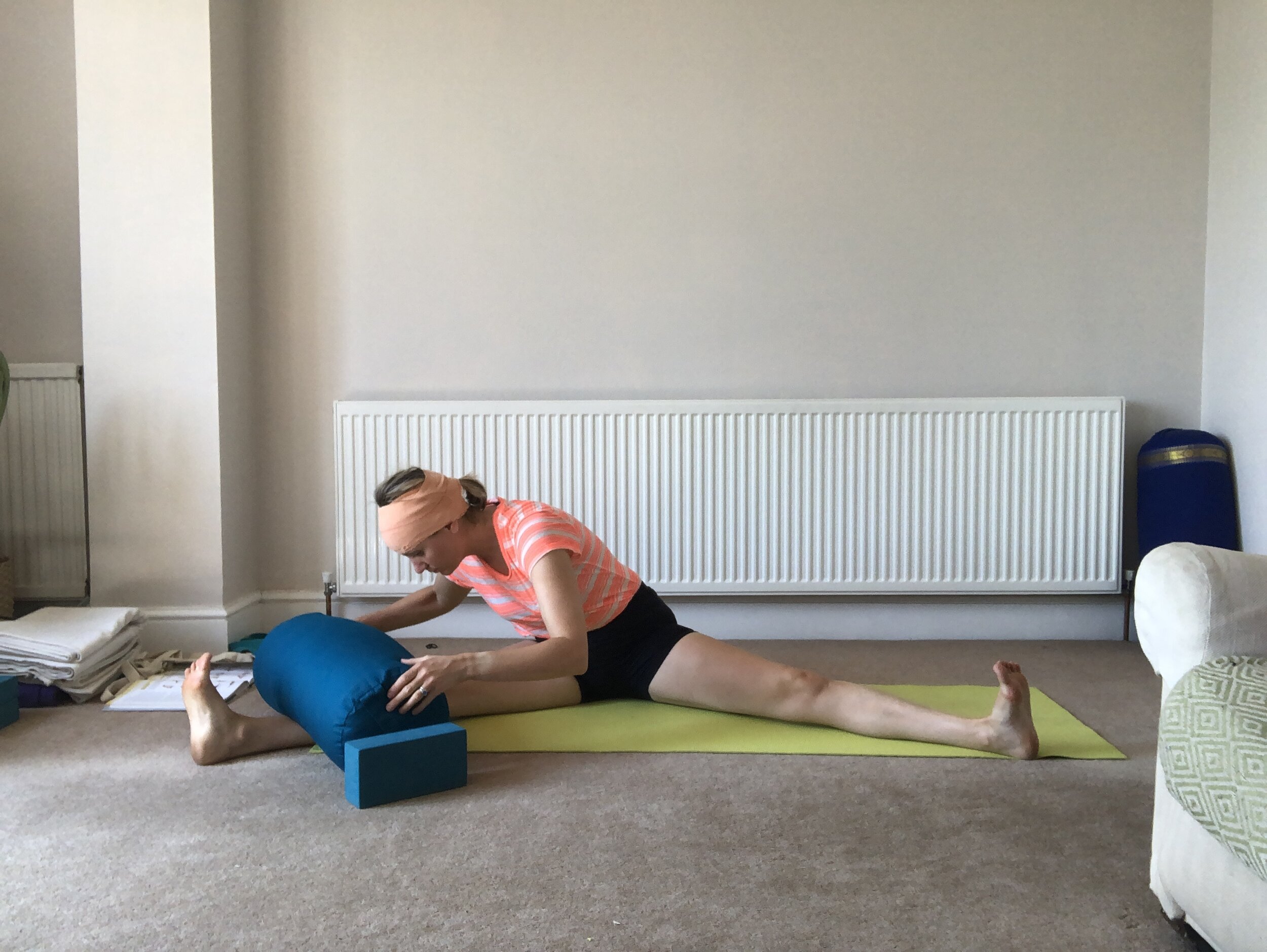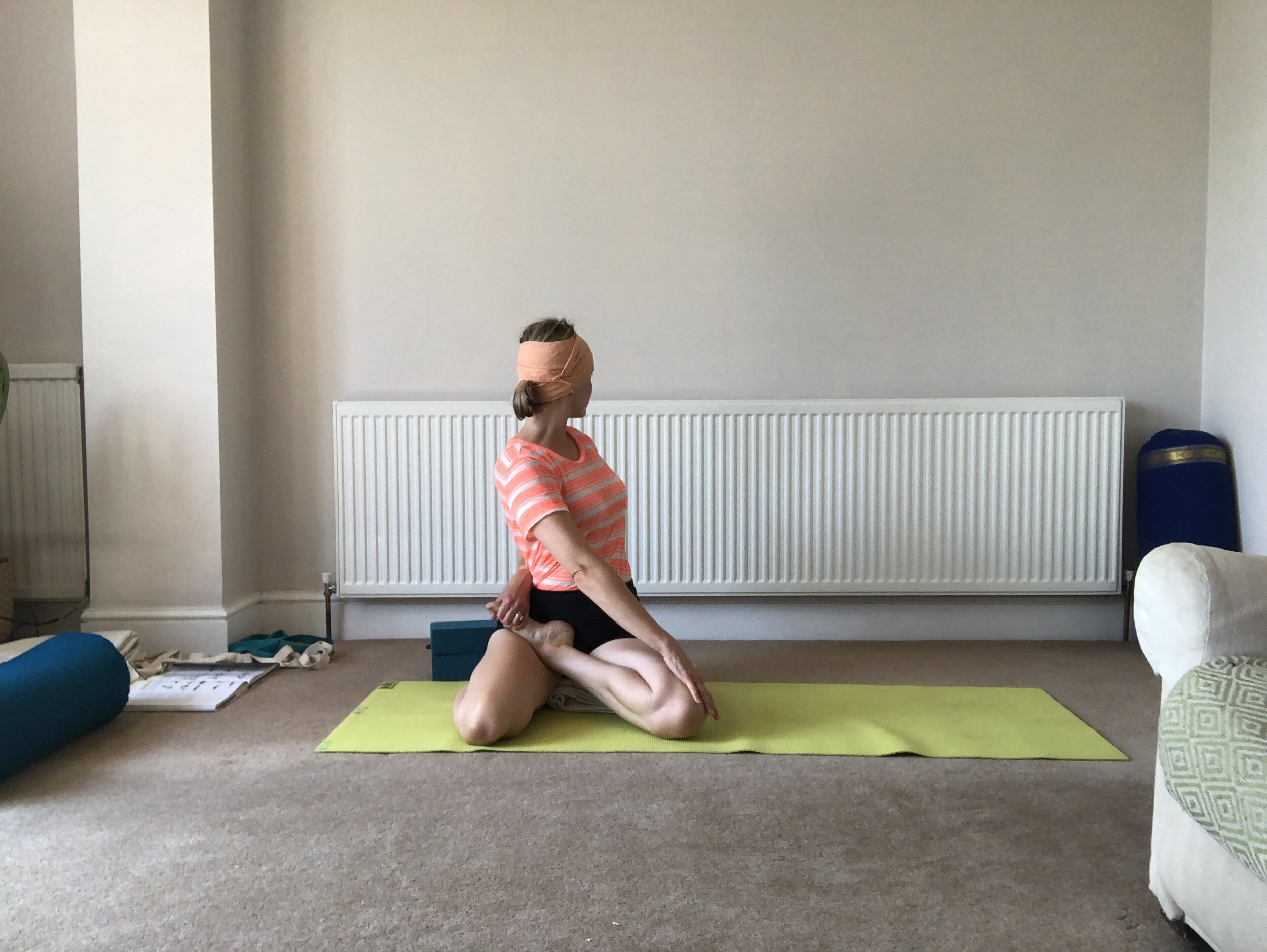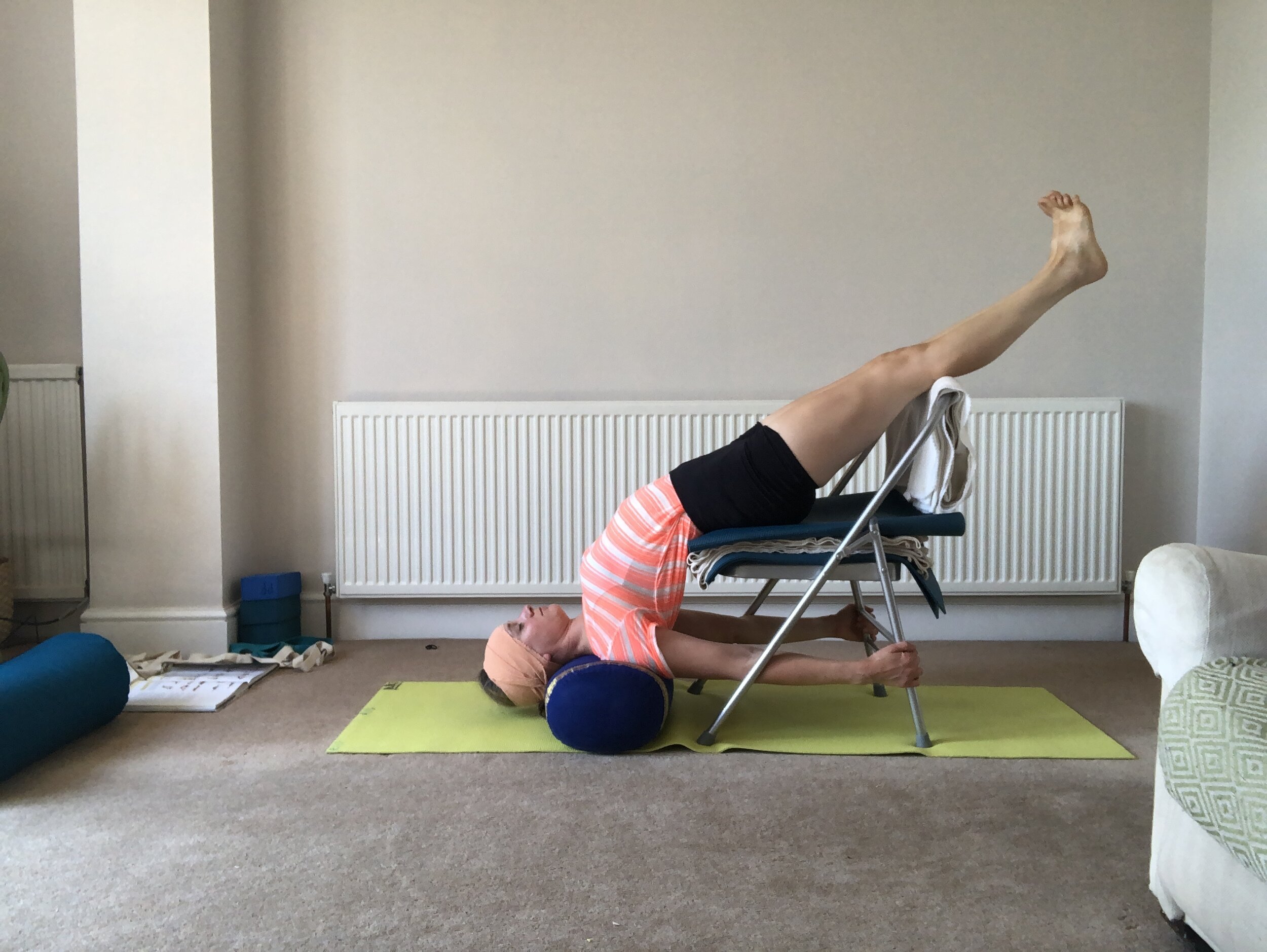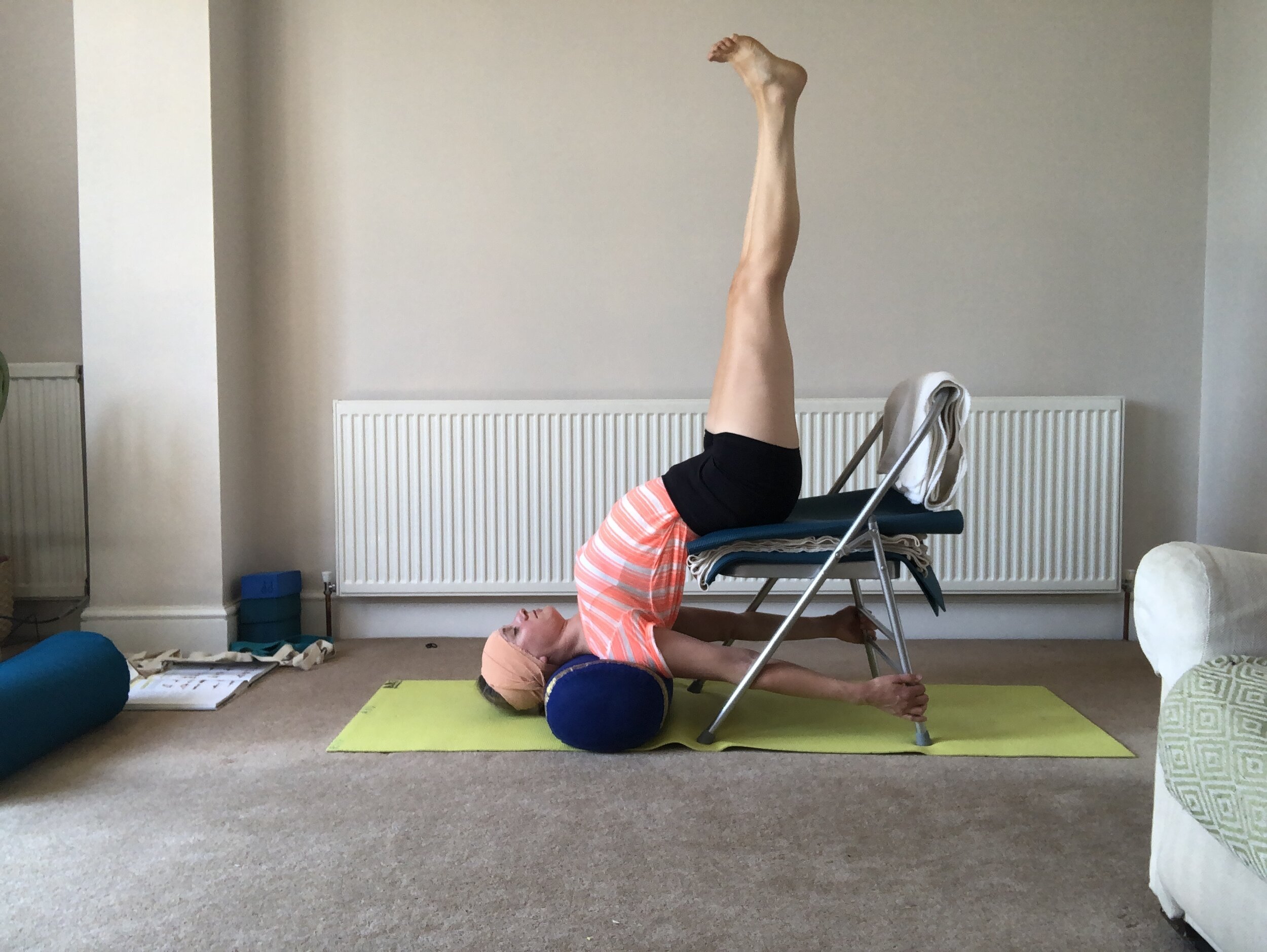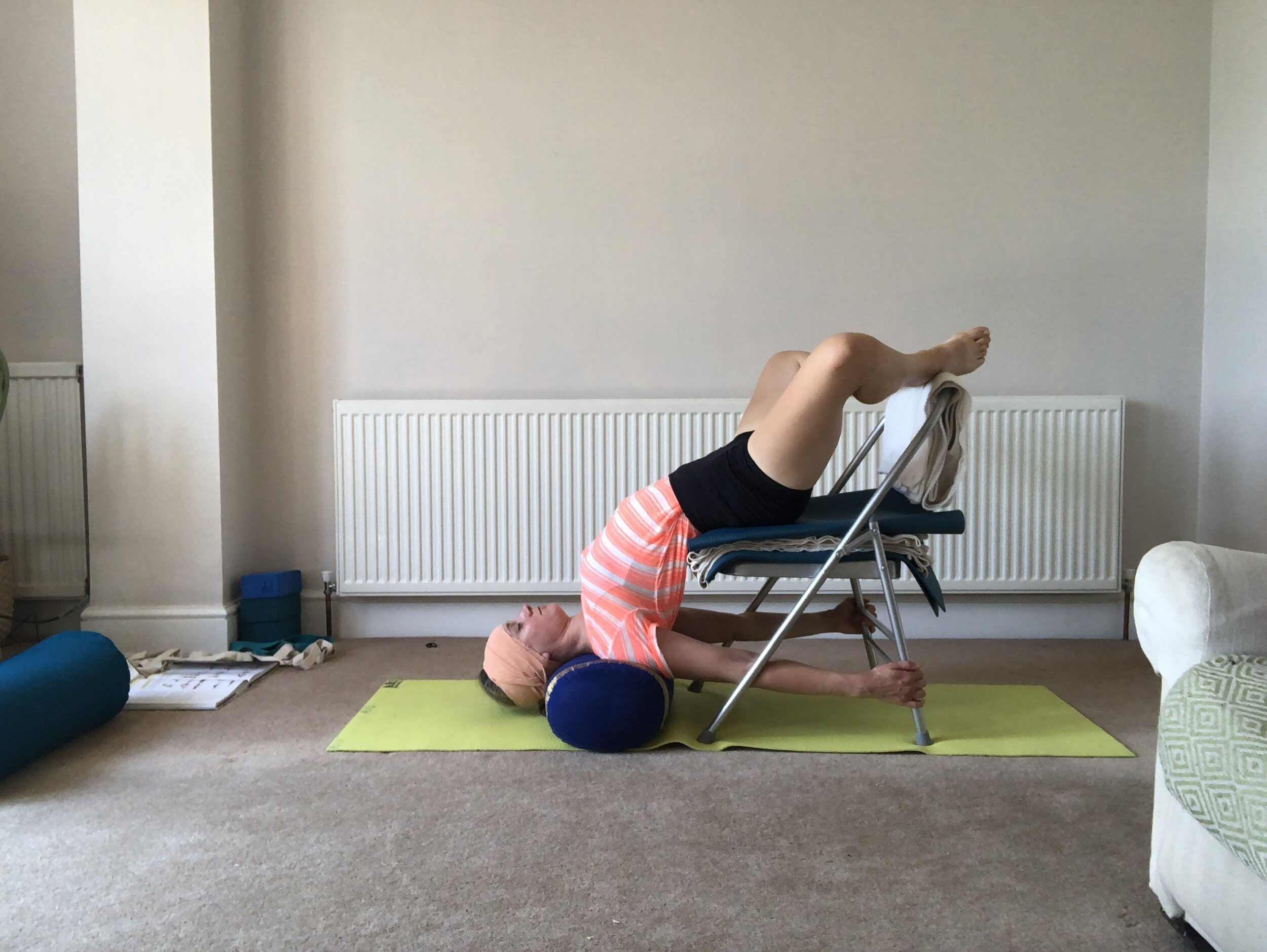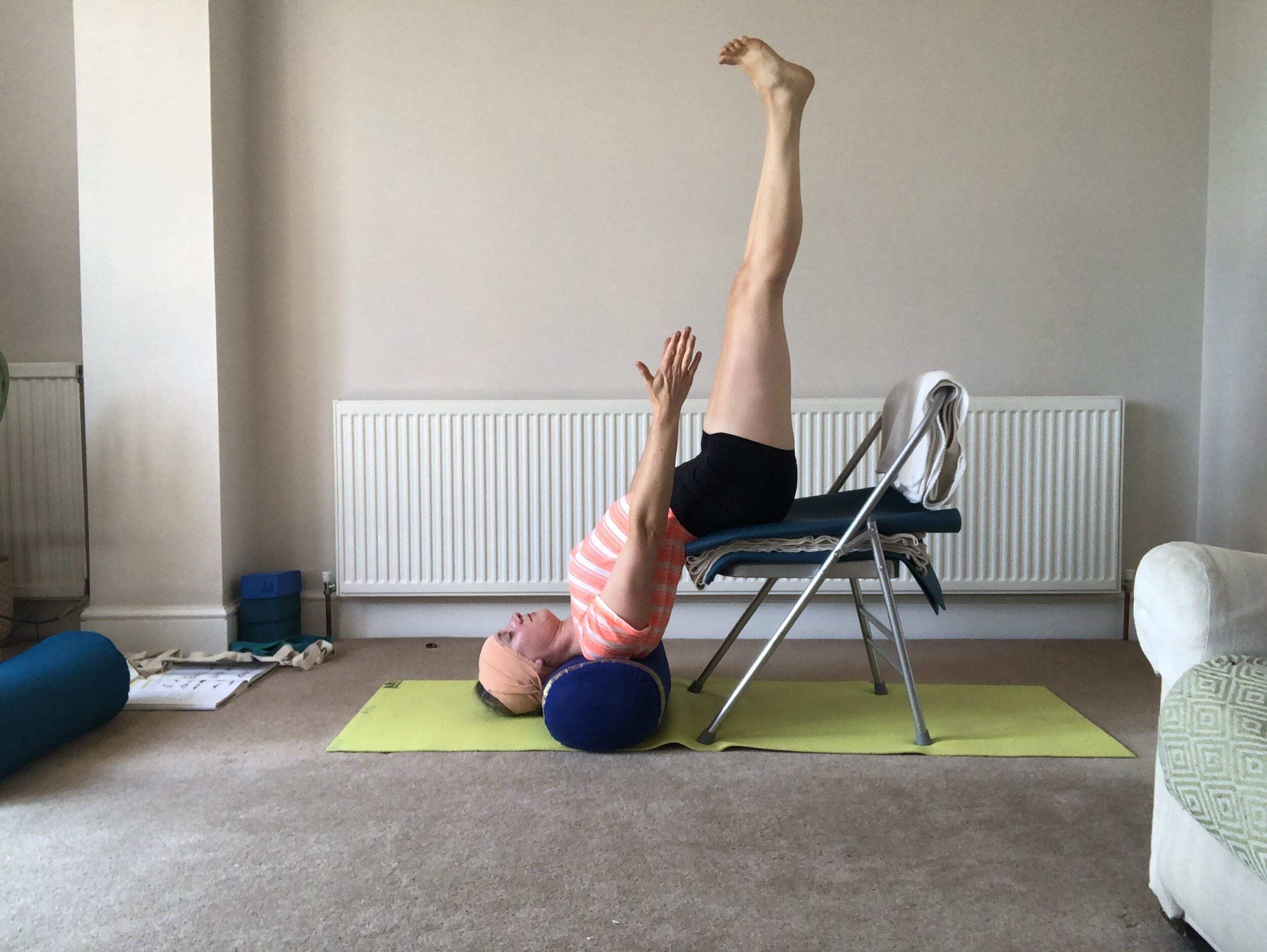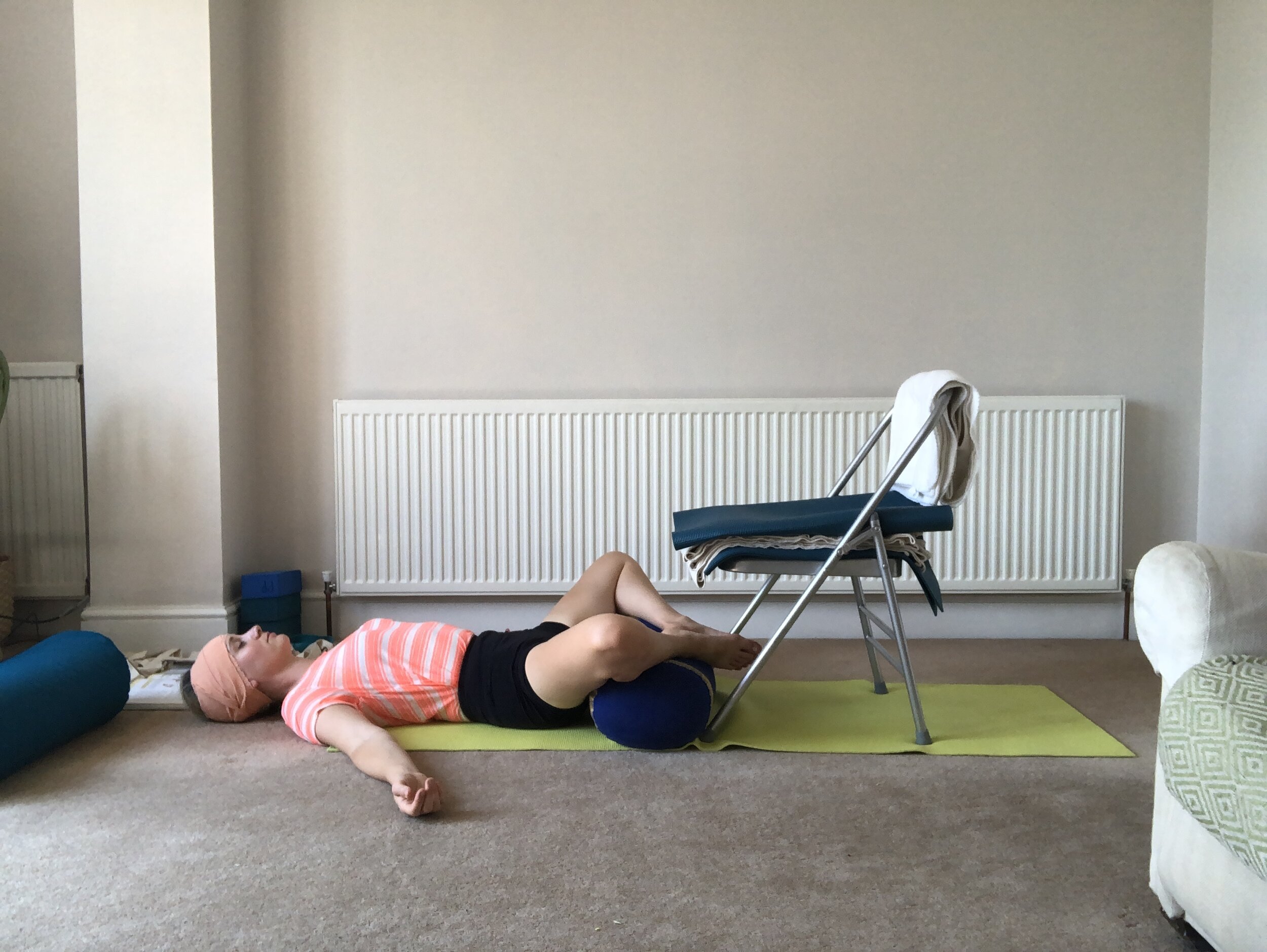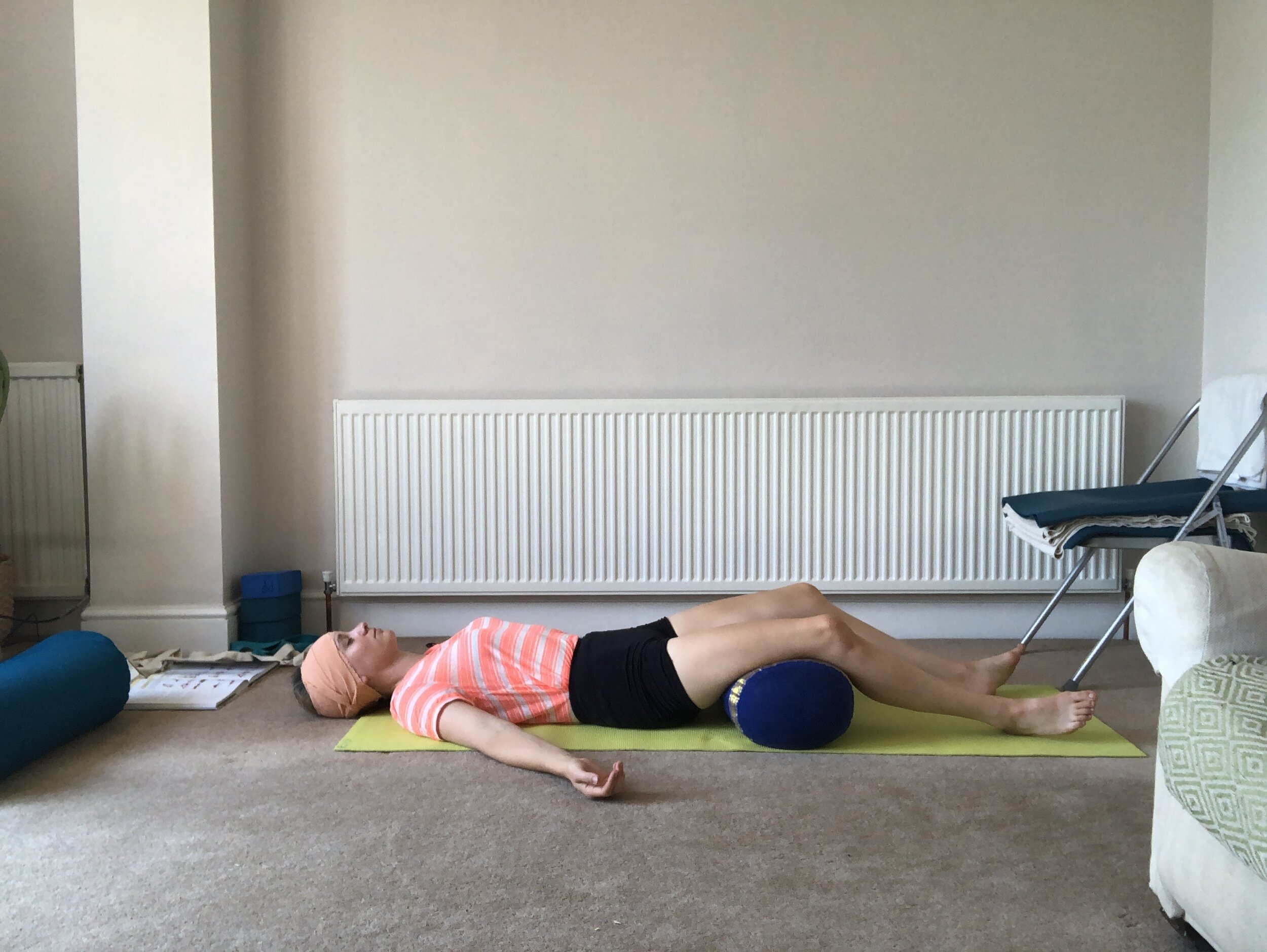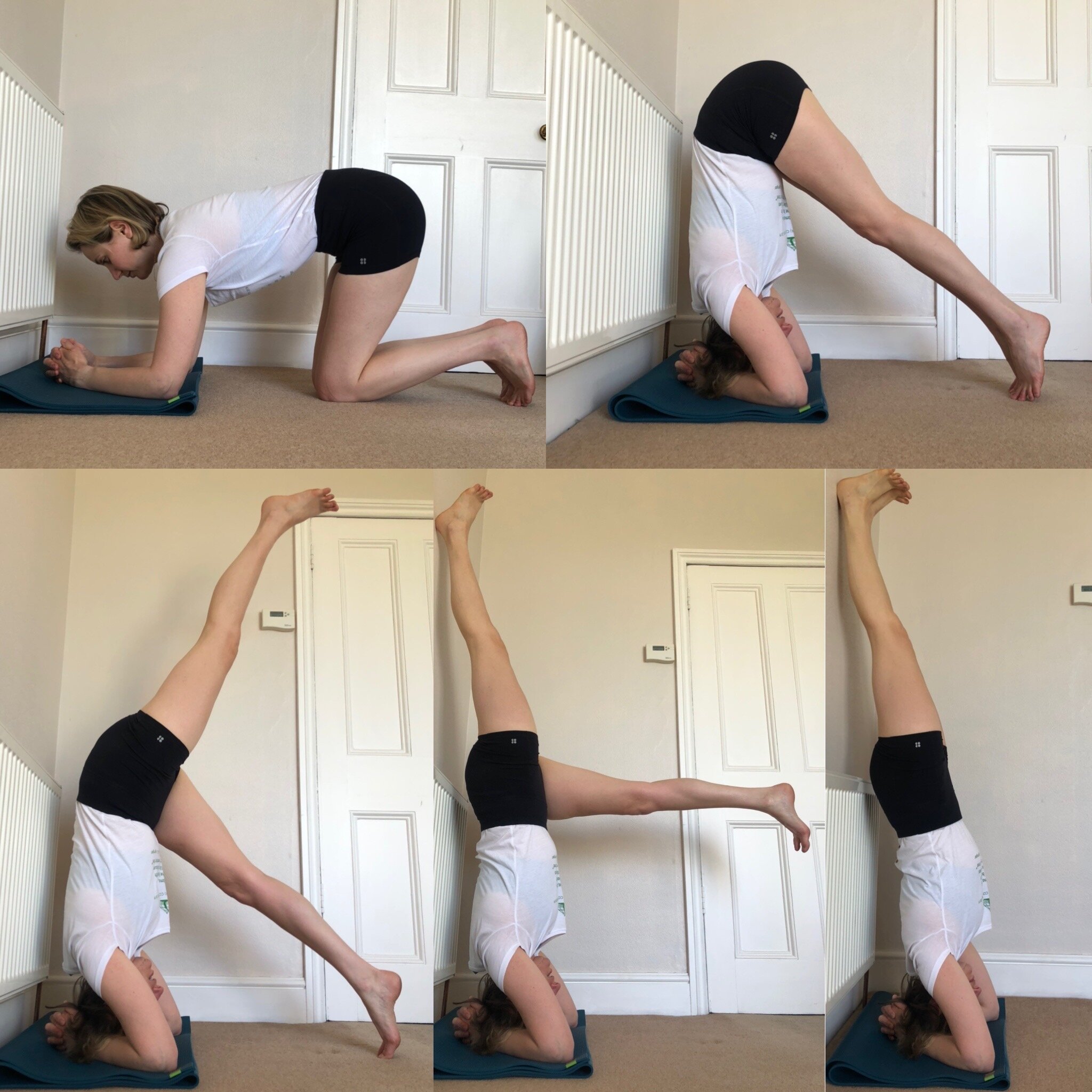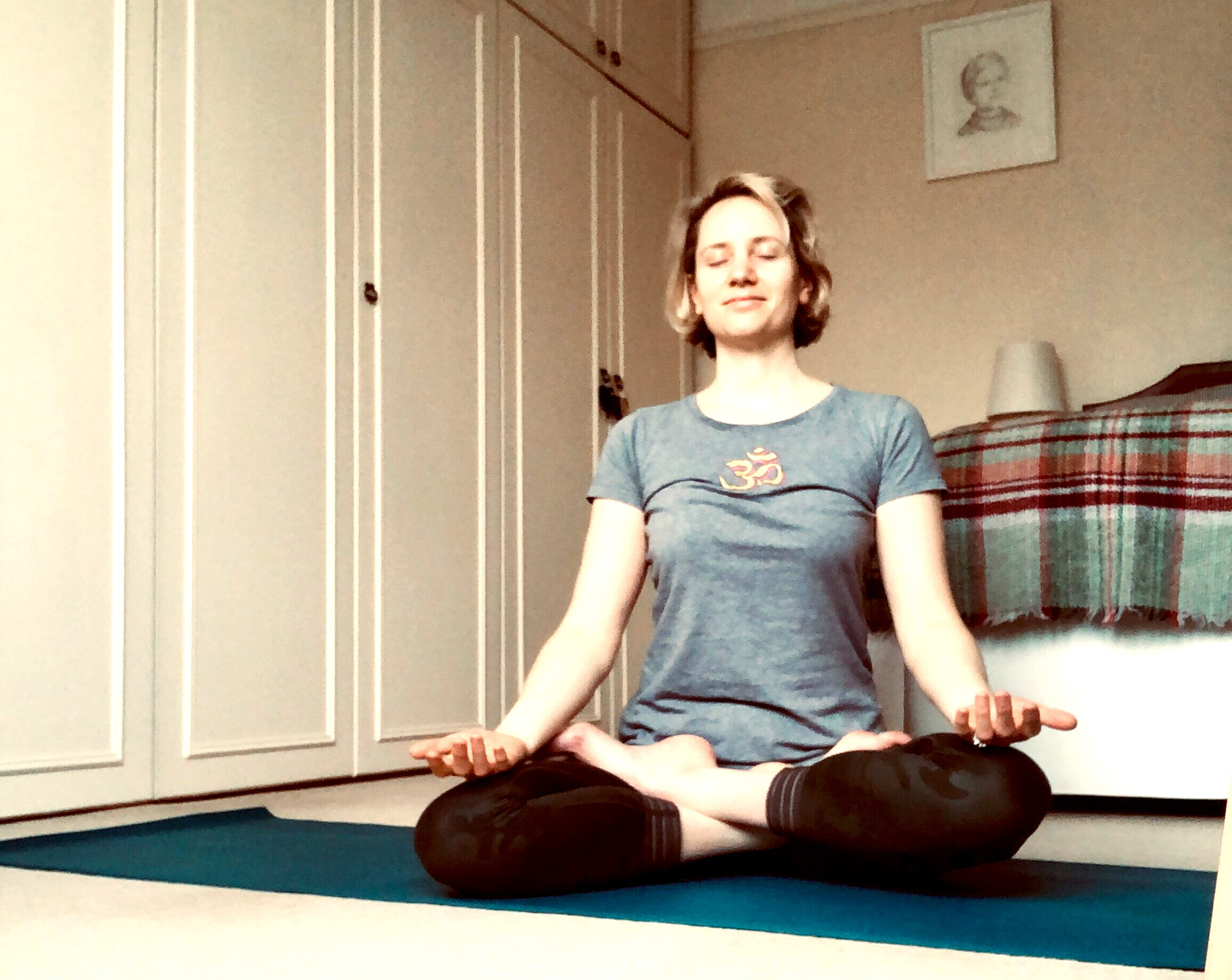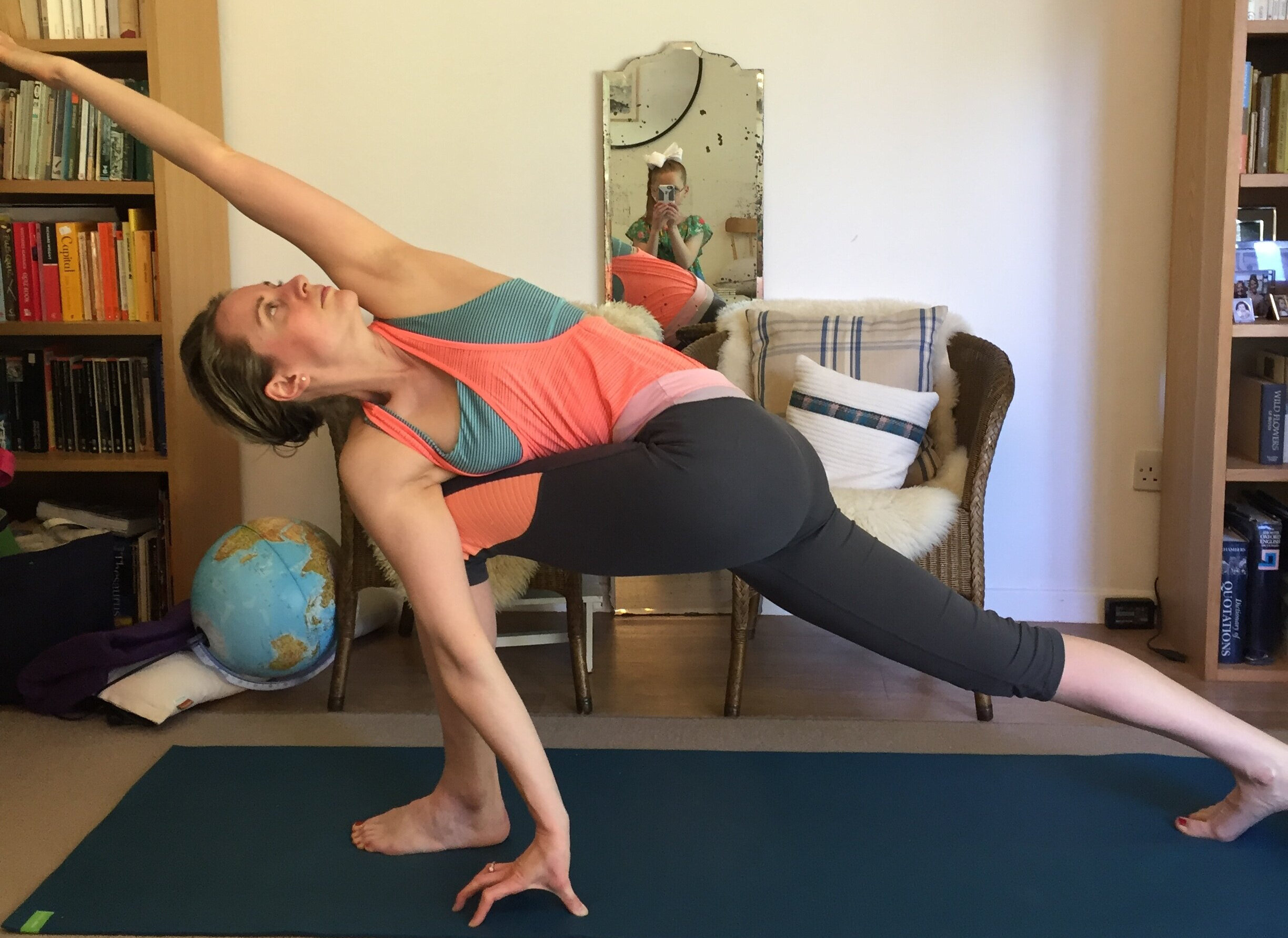It’s easy to ignore what we can’t see, and so it is with ‘the back body’ - as it’s termed in yoga-speak.
However, the ignoring gets harder when it starts to hurt. And if it ‘goes’ we realise just how utterly dependent we are on the beautifully-designed spinal column for our mobility.
A sedentary lifestyle, poor posture, inactive glutes, and weak deeper abdominal muscles all add up to create the perfect environment for back pain.
A surprising number of people have scoliosis of the spine, and don’t even know about it. It might show as hip pain, or sciatica, or as if you have one leg longer than the other. Of course, you might have an obvious scoliosis, but even the most severe of back conditions can be helped by yoga.
Back Pain
The most common area to feel back pain is in the lower back, the sacroiliac or lumbago area. But pain is also common in the mid-back area, the thoracic spine, as well as the very top of the spine where the thoracic spine meets the cervical spine. In fact, back pain can occur all the way down from the neck and shoulders, to the hips.
I’m not a doctor so this blog will not address serious back pain or issues such as slipped or bulging discs. These should be seen by a medical doctor.
The back pain I’ll be discussing is the non-specific kind that is caused by a strain on the muscles, tendons, or ligaments surrounding your spine. This can be caused by lifting a heavy object, a sudden movement, or the wear and tear of getting older.
If you haven’t ever had back pain, but get the odd twinge – then ACT NOW. Prevention is better than cure. And this is where a regular yoga practice comes in.
So get on with giving me those five ways already! I hear you cry. Right, Ok then.
1. Standing Poses - Awareness
The best way to introduce yourself to your back is through practising the standing poses. They put your back through the full gamut of movement, while relying on your legs to do the heavy lifting as it were.
Once we become aware of how we stand in Tadasana, and how our body works through all the other standing poses, we can start to work out how our spine works.
If you have a pre-existing back problem, your teacher will always tell you to step, not jump your feet apart, and to stand with your feet slightly apart. This means that you’re not putting extra pressure on the spine.
2. Twists - Mindful Stretching
The other thing we do when we first start yoga is that we want to rush to the final pose. There’s an element of competitiveness, wanting to ‘do our best’, and impatience that pushes us to get to the last stage.
The problem with this is that if we ignore those intermediate stages we build in bad habits that will come back to bite us (in the back) further down the line.
Twists are a great way to practice mindful stretching of the spine, especially sitting on a chair, or plenty of height. It’s also important to get that twist right from the lower abdomen, this means that the twist works up and down from your waist and reduces the load on your sacro-iliac joint.
Using the breath to increase the twist, as well as increase your hold, will add to the mindful quality.
3. Forwards Bends - Lengthening
The spine is supported by muscles, tendons and ligaments. If these supports are short and tight, it can impact the healthy movement of the spine. Through our yoga practice we learn to create space and length in the spine through the extension of the muscles, tendons and ligaments.
It's not a quick fix. A senior yoga teacher recently told me that it takes seven years (of consistent practice) to make a difference. But that’s still achievable, and shows that will persistence comes results.
Of course the whole body is connected tight hips and hamstrings can also have an adverse effect on the back. By learning to bend forwards, we lengthen the entire back body.
4. Backbends and Abdominals - Strengthening
To have a healthy back we need to do a combination of stretching and lengthening these supports, but also building up the muscles that support the movement of the spine.
And there’s a lot of them. There are the para-spinal muscles, the trapezius muscles and the glutes – just to name three.
The backbends start to build up the muscles of the spine, increasing the strength and resilience of your back. Abdominal poses are important for supporting the movement of the lower back, especially for flexible people.
5. Inversions - Postural improvement
When we start at an Iyengar yoga class, many of the instructions are perplexing to say the least. The longer we attend, the more we can feel and the more subtle our physical adjustments become.
Gradually you can build up to regularly practising the inversions. The inverted poses will help to strengthen your spine as you are lifting up the body against gravity. It’s also really important to be aware of your spinal alignment in these poses, as incorrect posture can adversely affect the neck and upper spine.
But if you treat the inverted poses such as headstand and shoulderstand with respect they will certainly help to strengthen your back well into old age.









